August 26, 2018
Martha O'Kennon
One day this week, it was pleasantly cool all day. The first lovely day we've had all summer. Of course, quite a few people will react strongly and negatively to this statement. Many people love hot and humid. But I find as I age that I'm totally wiped out if I stay out in the sun for long enough to snap a few pictures. We've also continued to have some rain. This morning started out with thunder, lightning and rain. It's still quite a bit cooler than in the heat of the summer.
You can't believe I'm not posting goldenrod pictures here? Don't worry, there will be plenty of the yellow stuff in a bit. Yes, it happened -- the goldenrod is officially open for business. But here are some of the other flowers: the Japanese anemone is kicking its way through the door of our conscience. The August Orange Day Lilies are blooming in the southwest garden/patch. And one of my few greenhouse plants that still lives, this gloriously colored phlox, is exploding slowly into view.
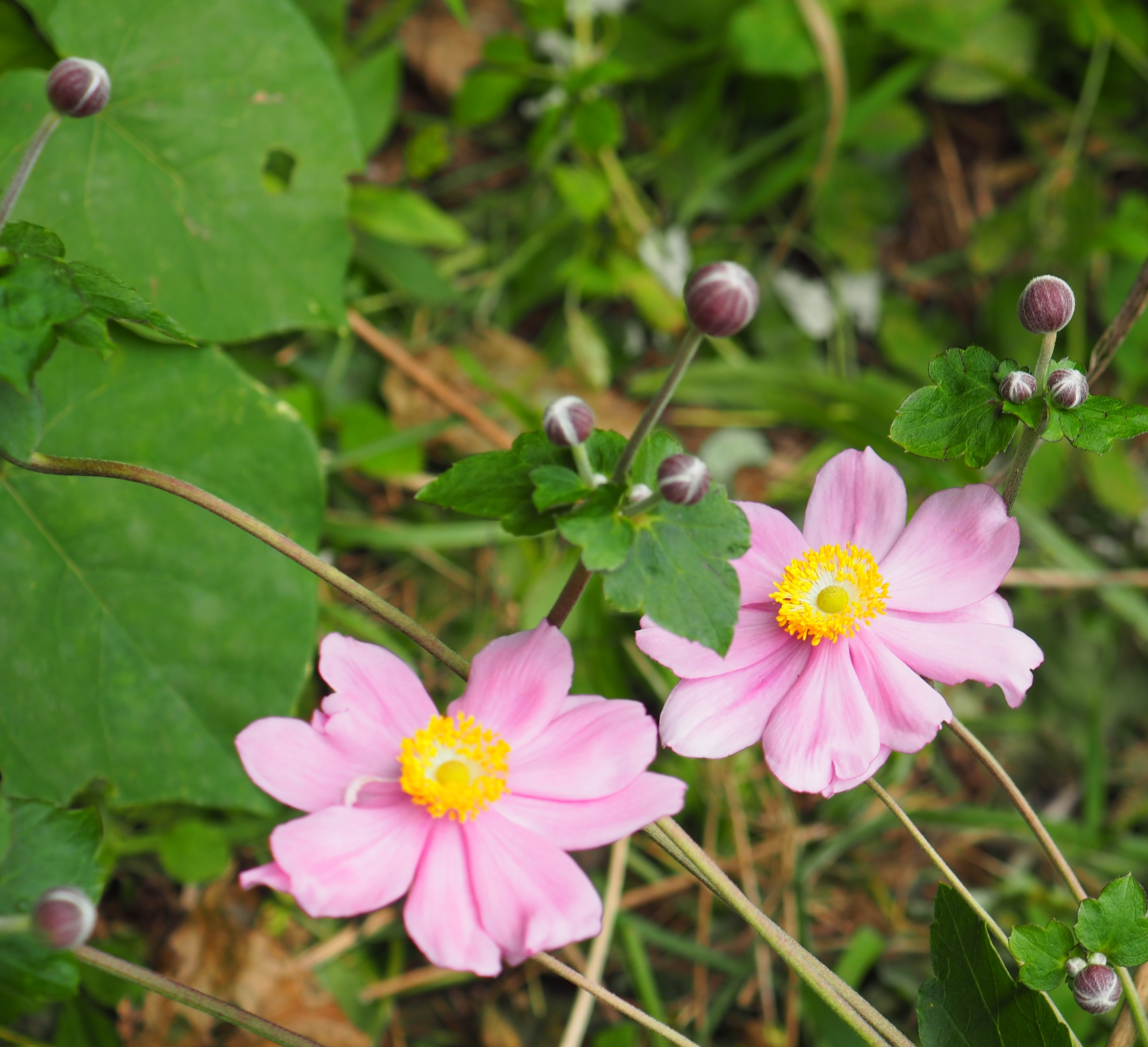
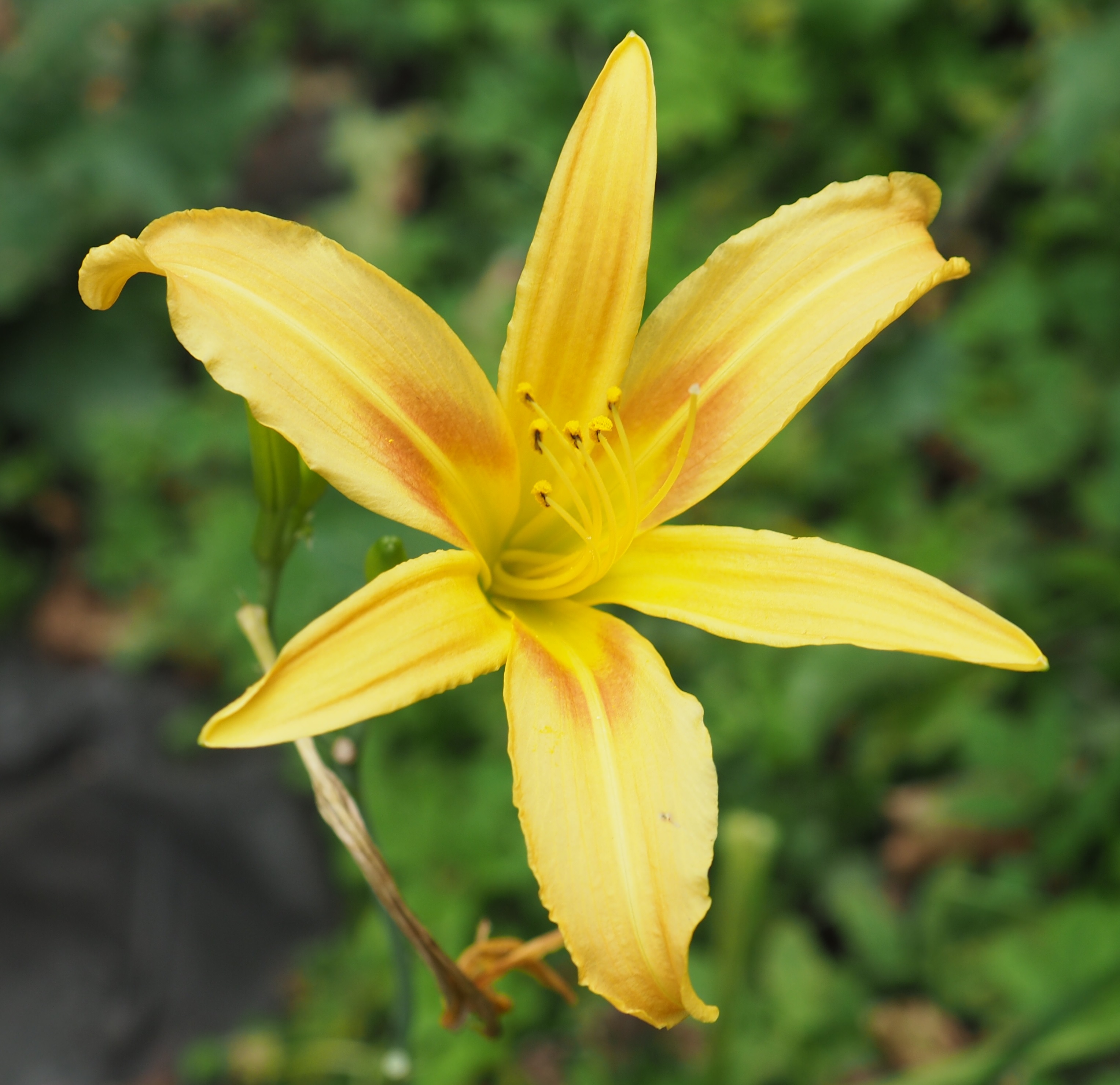

Remember that there is information in the name of the file for each image. You can see it by mousing over the image - look at the lower left of the screen. Or you can click on the image to get to the (usually) larger image. Then the info is displayed in the address line above. Sometimes the second click will actually display a different view of the original image.
Not too much new with the ants. We're back to seeing mostly Carpenter Ants of various livelihoods. But I have some new information on that "ant mimic" that we saw in July. Do you know why I haven't seen one lately? Well, let's look at an older puzzle. I had seen another "ant mimic" back in July 2016 (picture 1). Someone helped me out, showing that this sweet deep pinkish bug, the "Lupine bug" is only an ant-impersonator for a very short part of its life. I'd taken pictures of Lupine bugs, not knowing they were the adult form of the same ant-mimic (picture 2). Well, this year's ant-mimic (picture 3) is quite different from the ant-mimic of 2 years ago, and I had a goodly bit of trouble figuring out its parentage. The Lupine is a "broad-headed bug", and not knowing any better, I searched for another "broad-headed bug" but learned on BG that it is NOT a broad-headed bug, but still a bug. I've never seen one of those as adults.
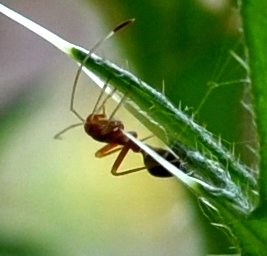
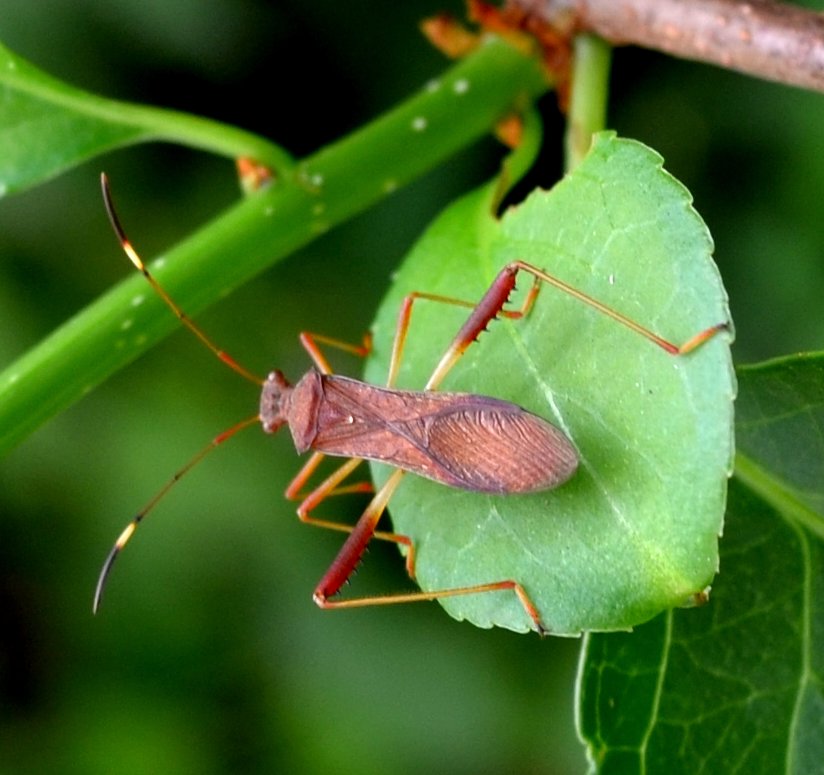
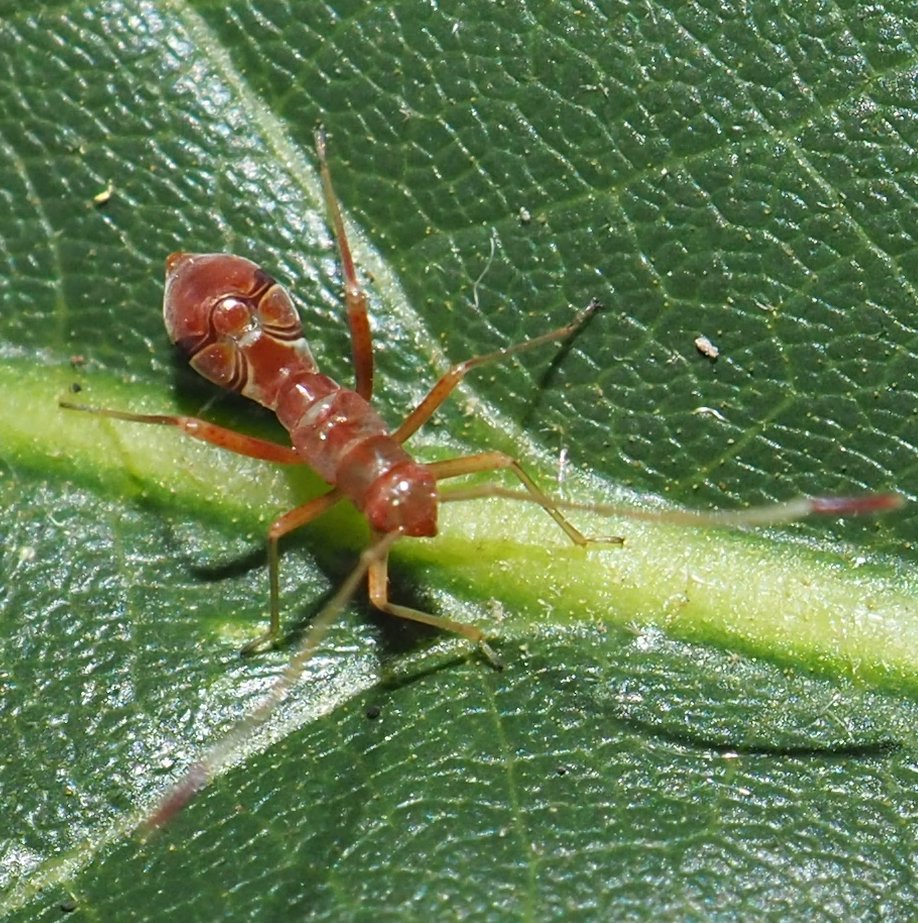
But here is a picture of an older bug, which looks like a bug but not much like the Lupine bug.
Now for the barklice... I must mean barklouse as all week I only saw one kind, one of the most widely spread around here. Now THIS (picture 2) is real goldenrod, with one of the first creatures to visit for nectar. It seems to be a bee of some kind. I don't know my bees well, as you know. Anyway, that was also the first (and possibly only) bee of the week. So let's see what the beetles can do for us. The third image seems to be of a metallic greenish beetle, maybe a flea beetle.
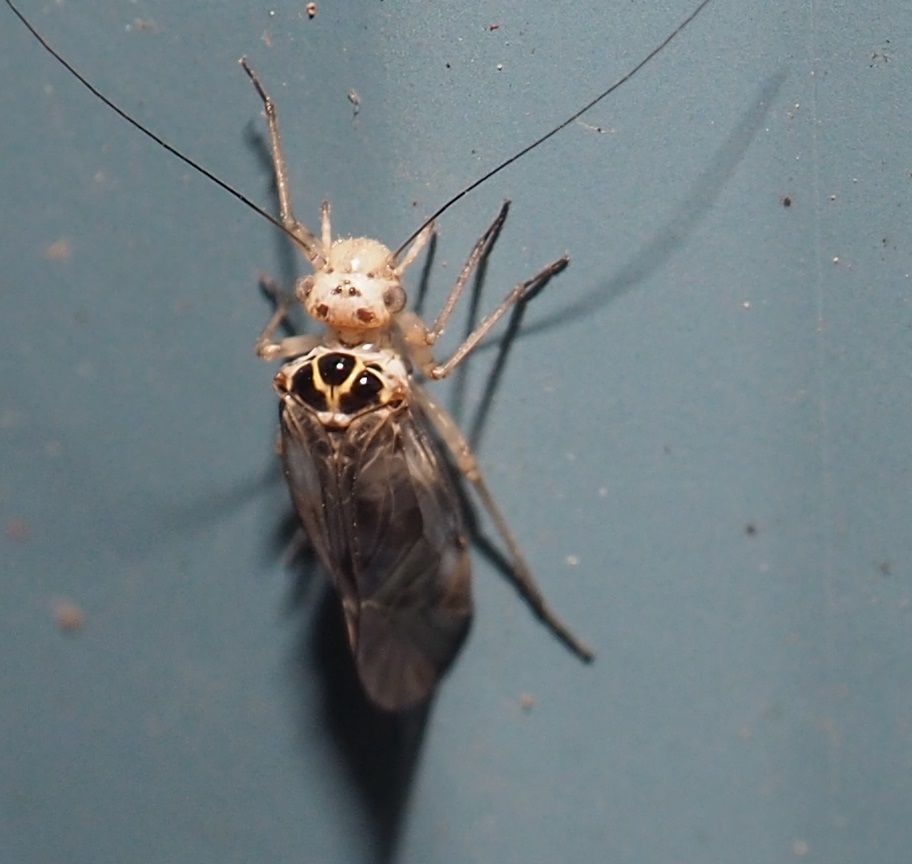
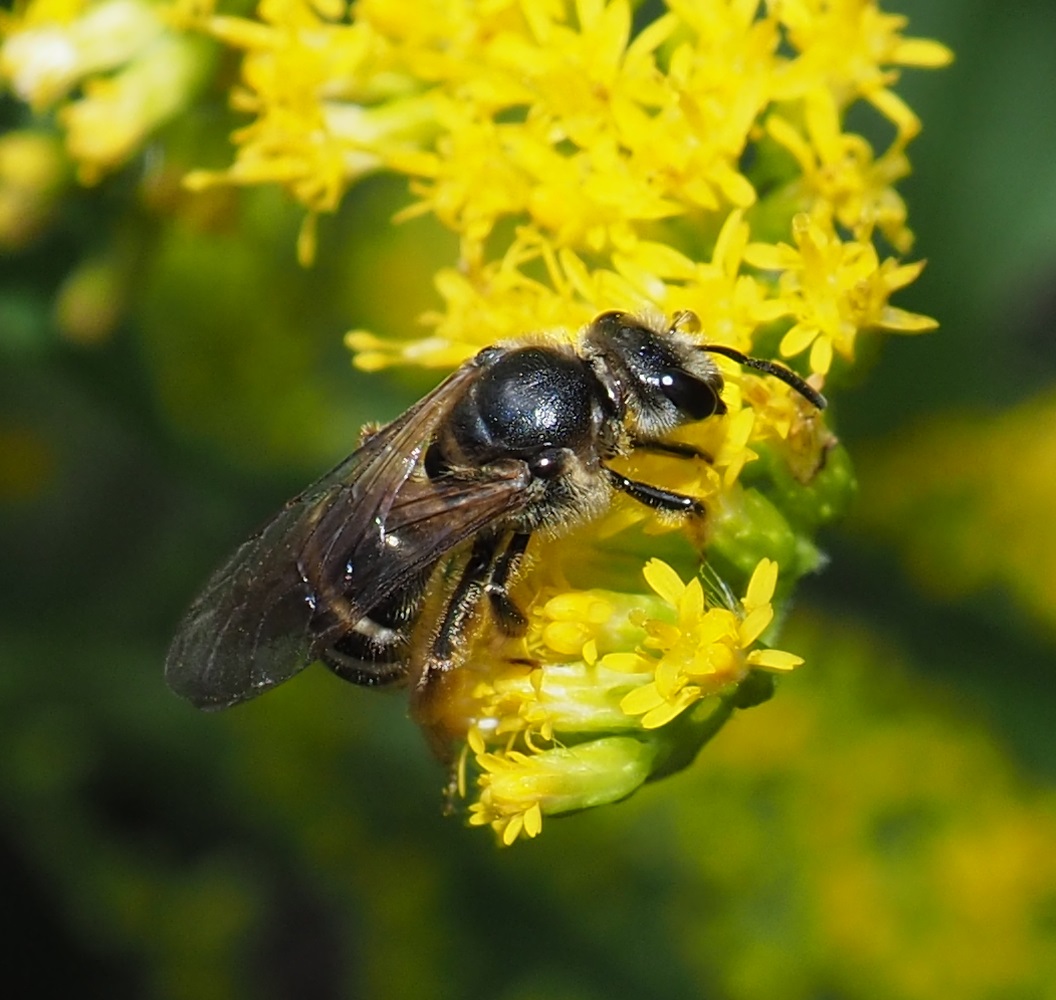
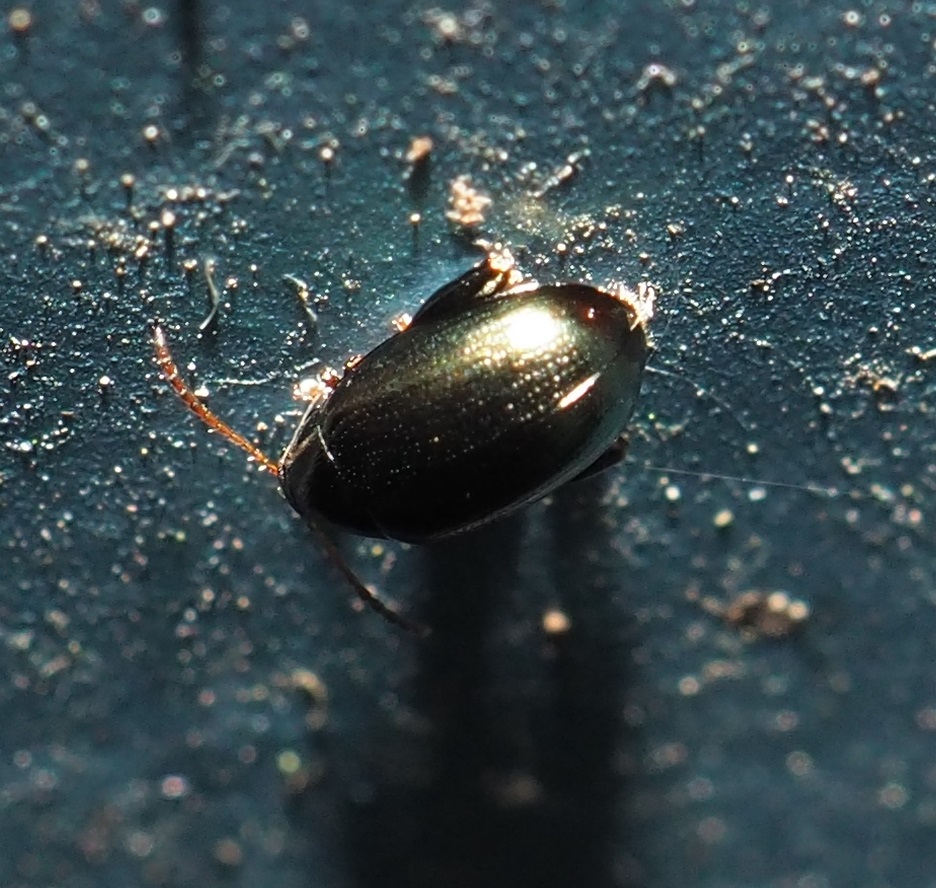
Number 1 on this next row is a squat reddish beetle, which I know Nossing Nossing about. The Goldenrod Soldier Beetle will show up when the Goldenrod blooms. It is attracted to the flowers of the Black-eyed Susan. But as you see, the Goldenrod nectar is also a great favorite of this Soldier Beetle. Third, this weevil (the Redbud Bruchid) also is attracted to Goldenrod. And last, we find a lovely gold and black End Band Net-wing weevil(Calopteron terminale). It is one of the few beetles that have soft wings like these.
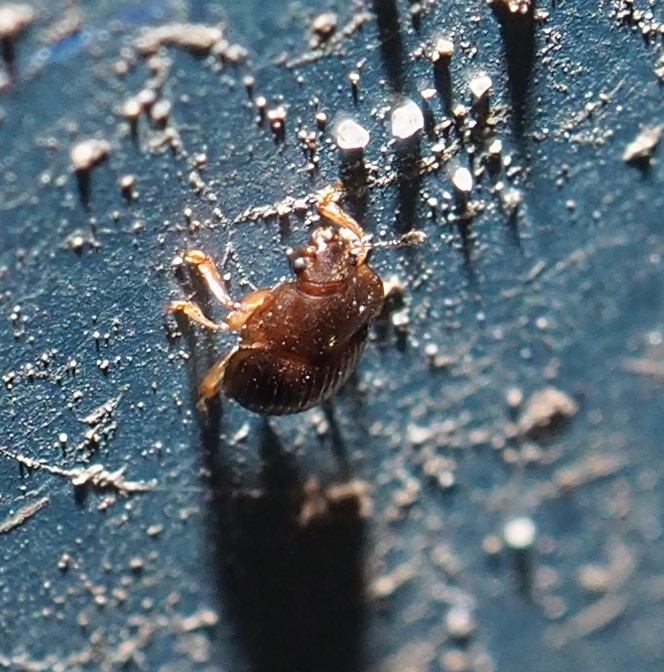
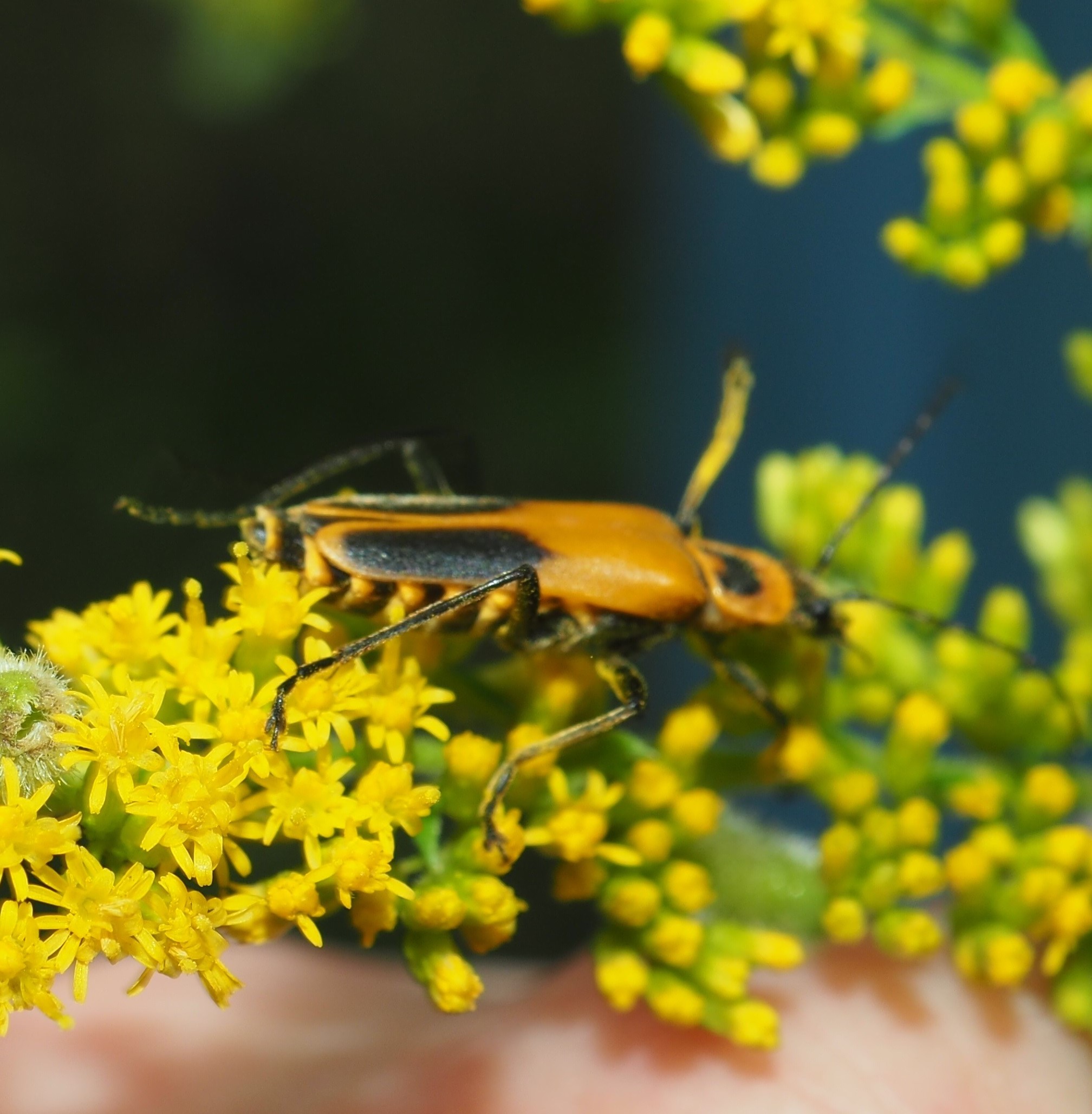
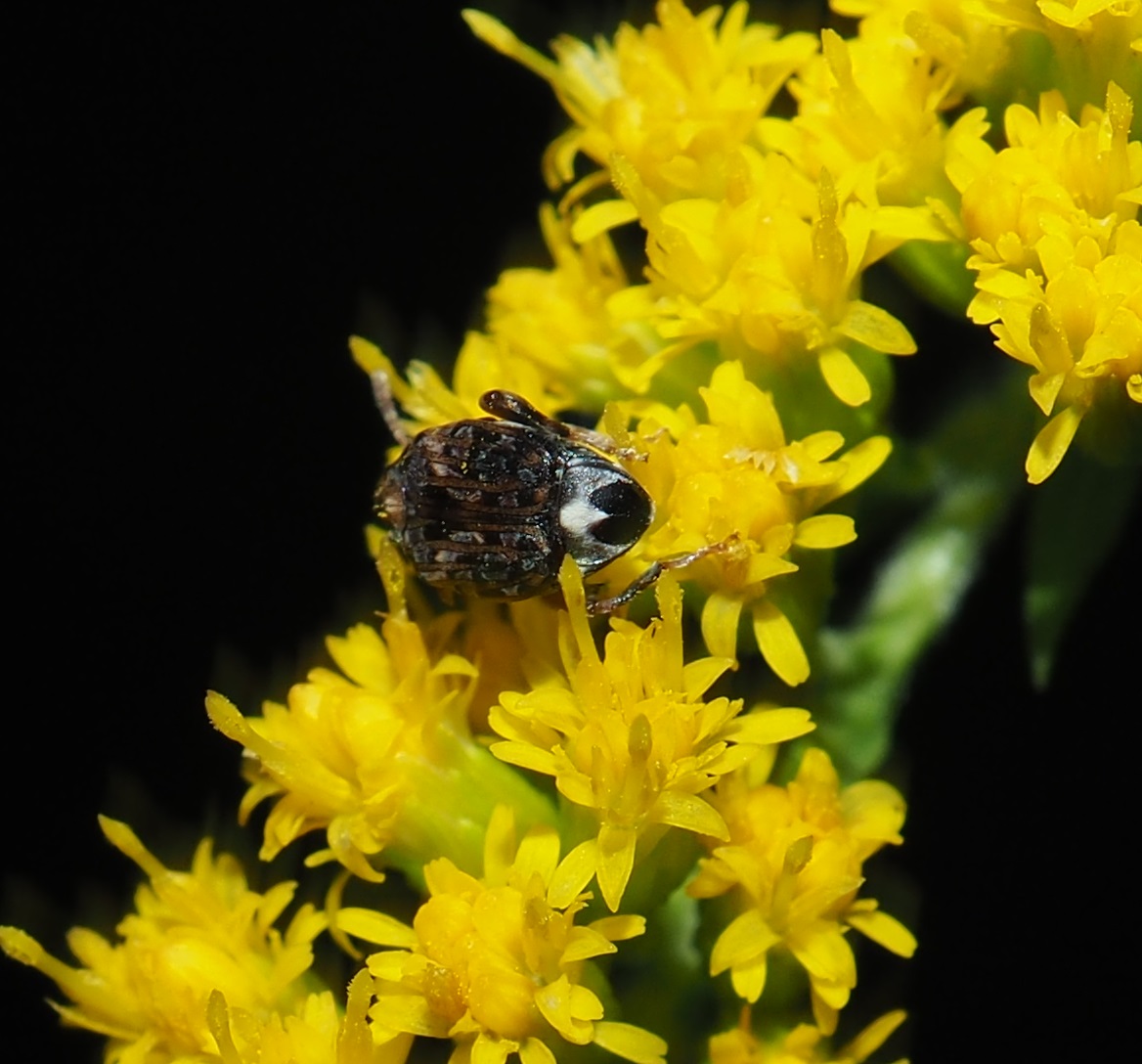
 8 19 18 1.jpg)
Now a visit with the bugs. First we have a large number of candidates for favorite Assassin Bug. This first one looks like the old-fashioned green and yellow (and red-eyed)ones. But the second candidate is more of a green and blue one. I don't know why we are suddenly seeing so many Assassins with such pretty blue patches, like the abdomen in picture number 3.
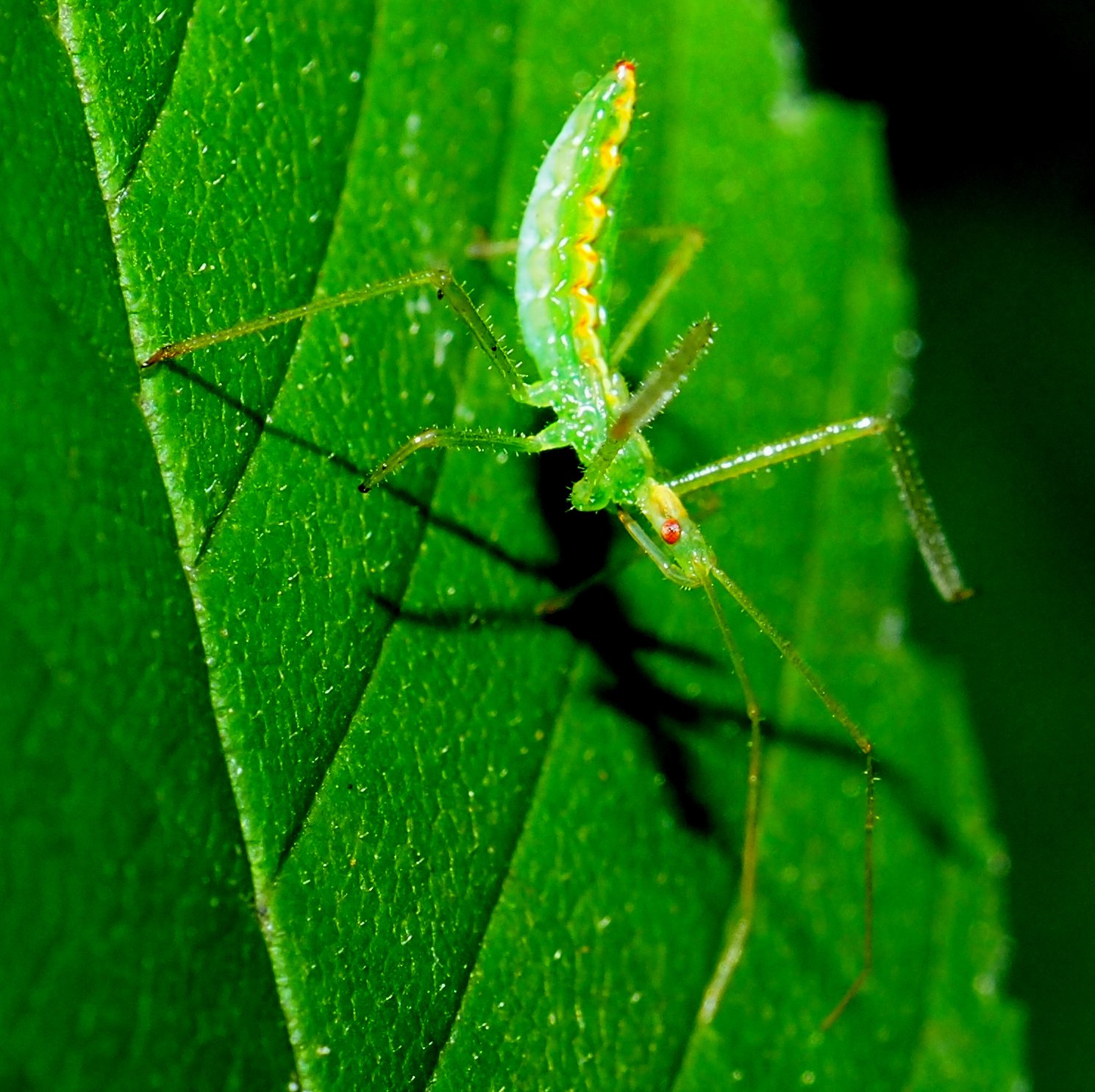


From Assassin to Leafhopper. We had a couple of old Leafhoppers, like this light-washed-out green and blue one, and also the Candy-Striper (second image). But the third image below is of a fairly new species.
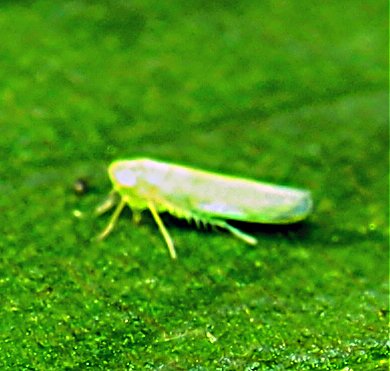
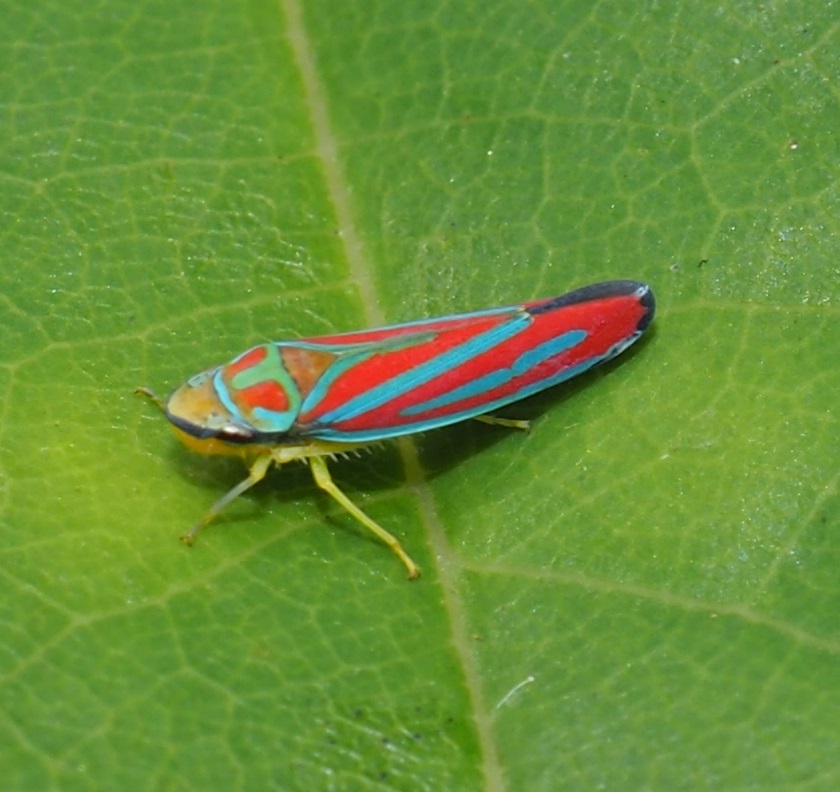
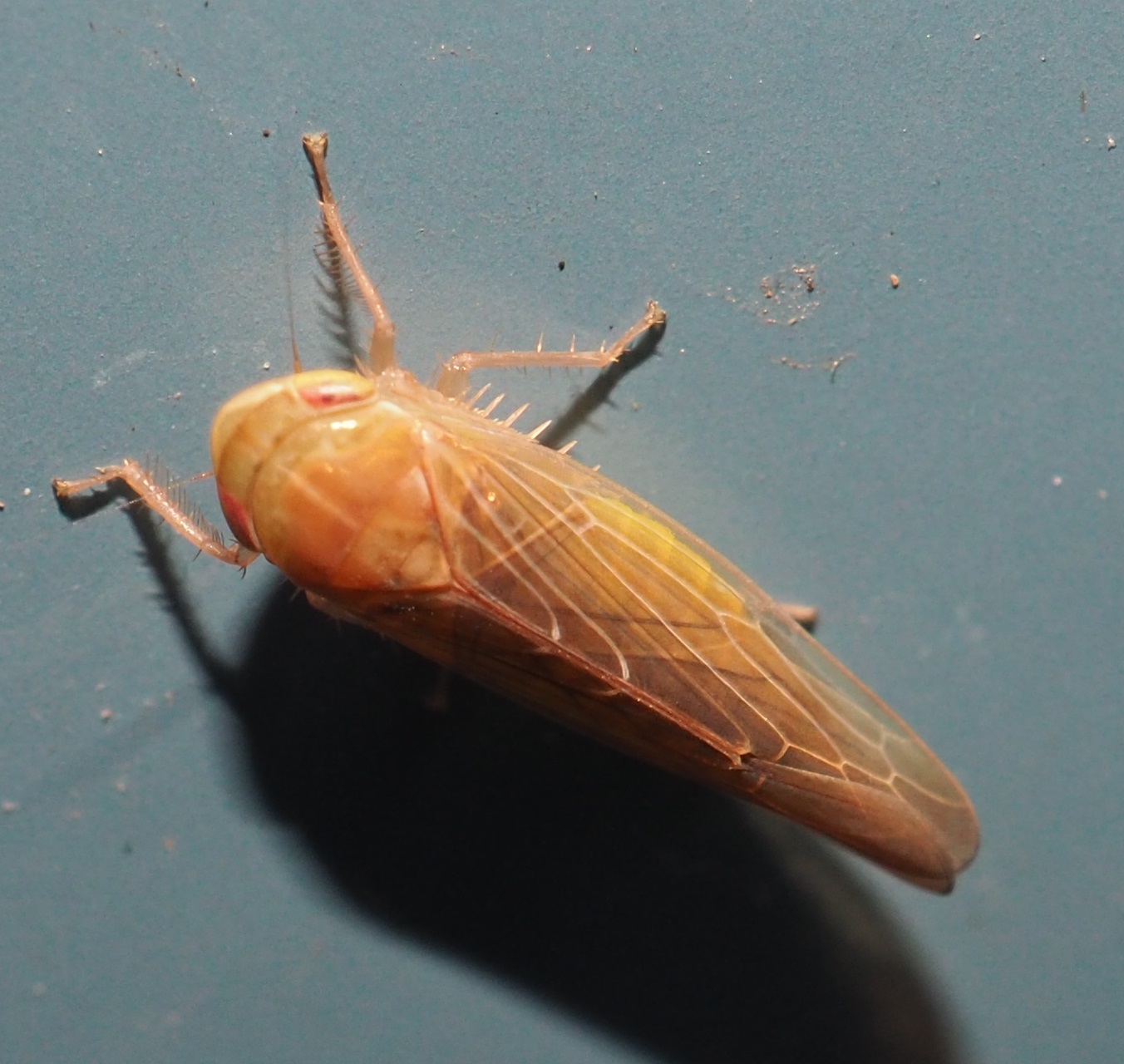
These white leafhoppers with red ornaments are quite frequently seen. They also seem to have markings that evolve for some reason into new patterns. I wonder if you will recognize number 2. It turns out that this is the adult of one that you have seen several times this summer, and even two years ago (number 3) .
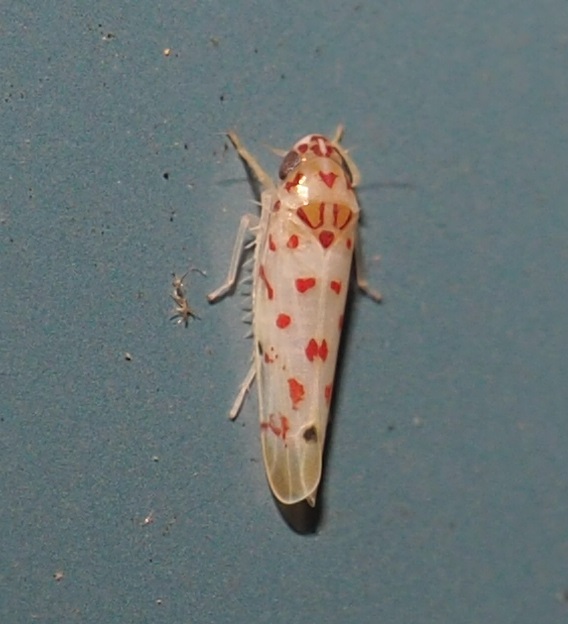
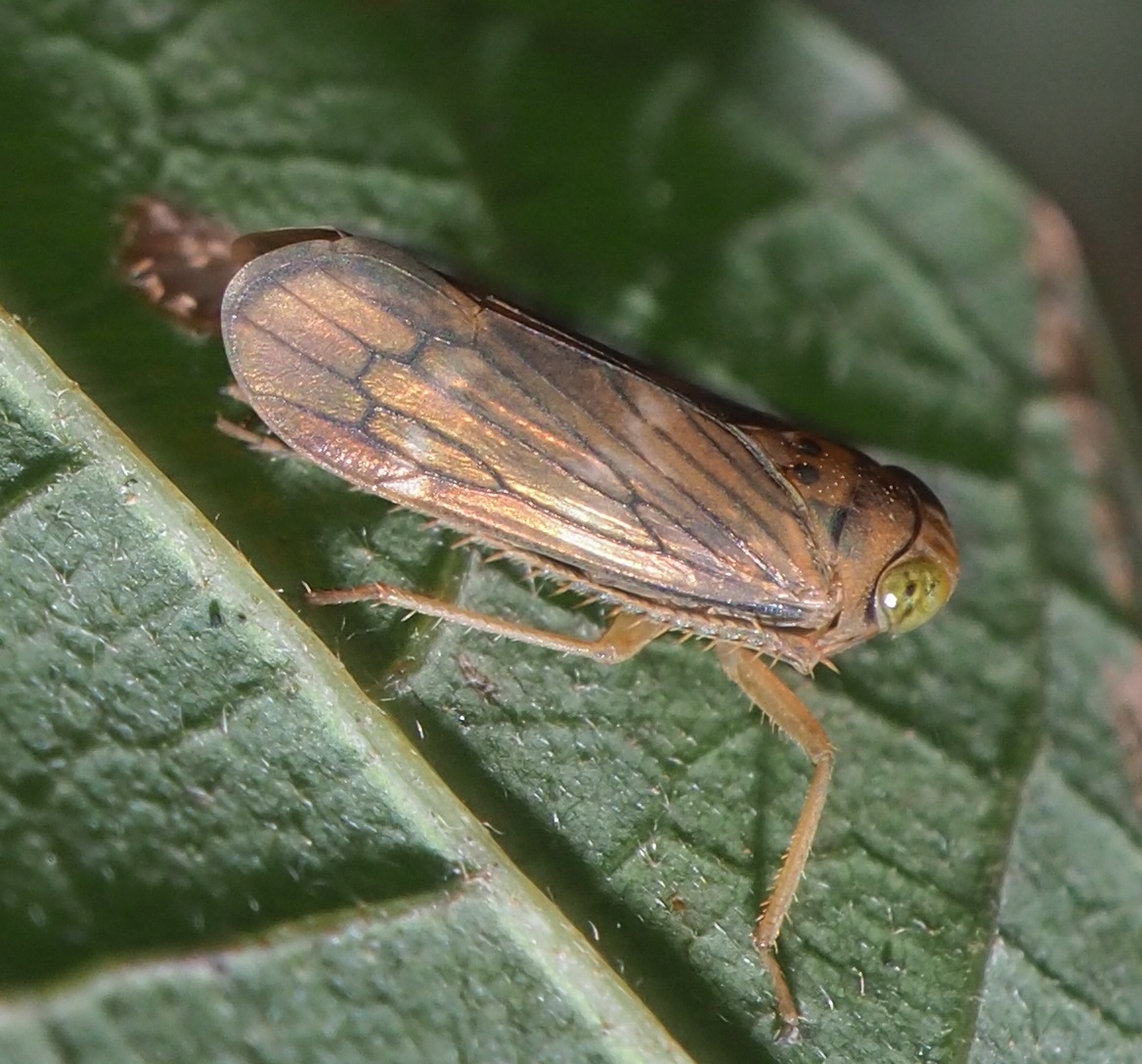
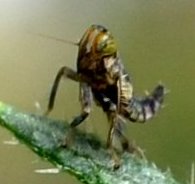
Maybe you know that leafhoppers and treehoppers, and others are related to the Cicadas. This summer I've seen adults of two species, One with redder ornaments (picture 1) and one with greener ornaments (picture 2). I rarely see one cicada all grown and out of its shell, so two was a treat!
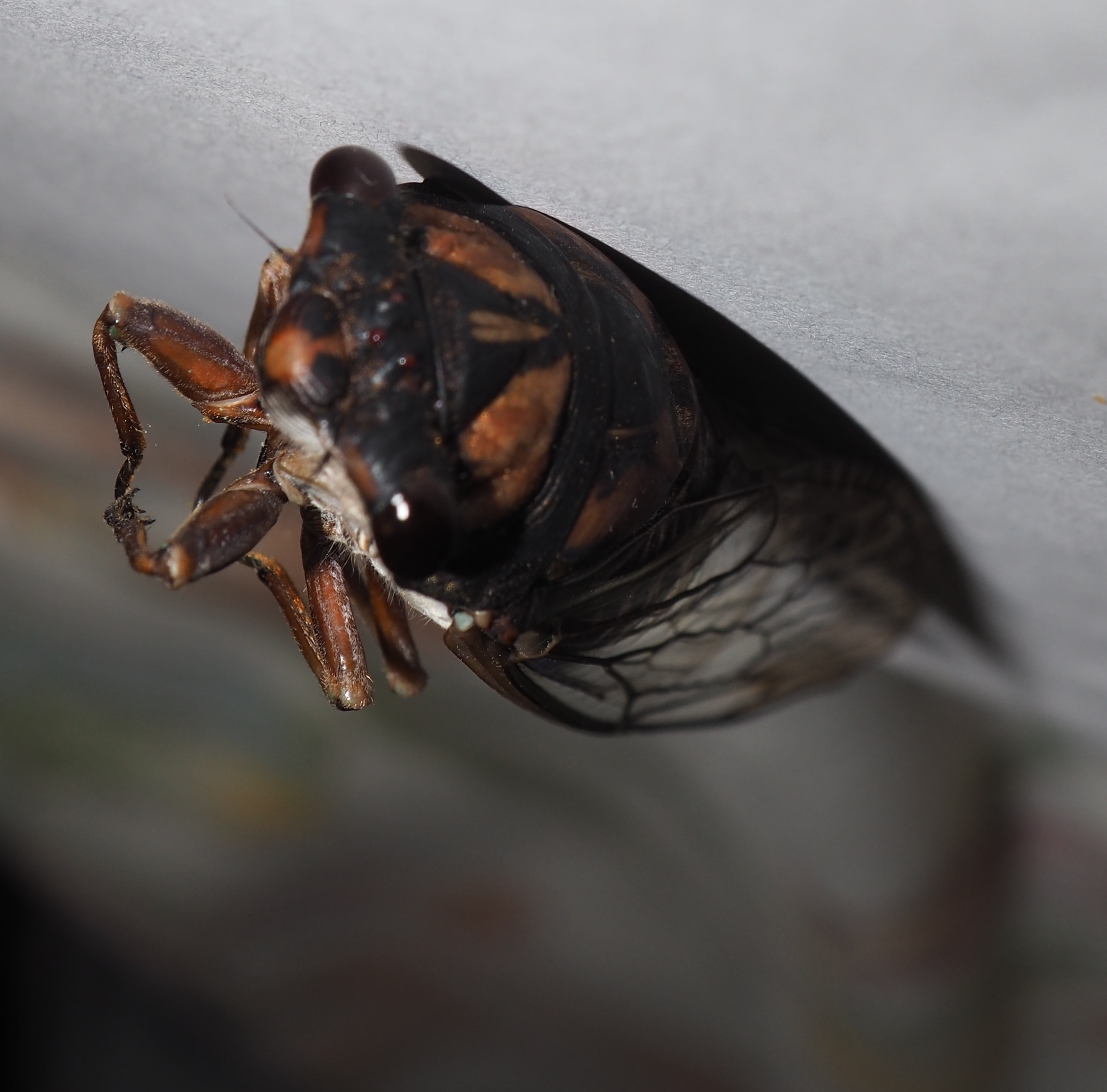
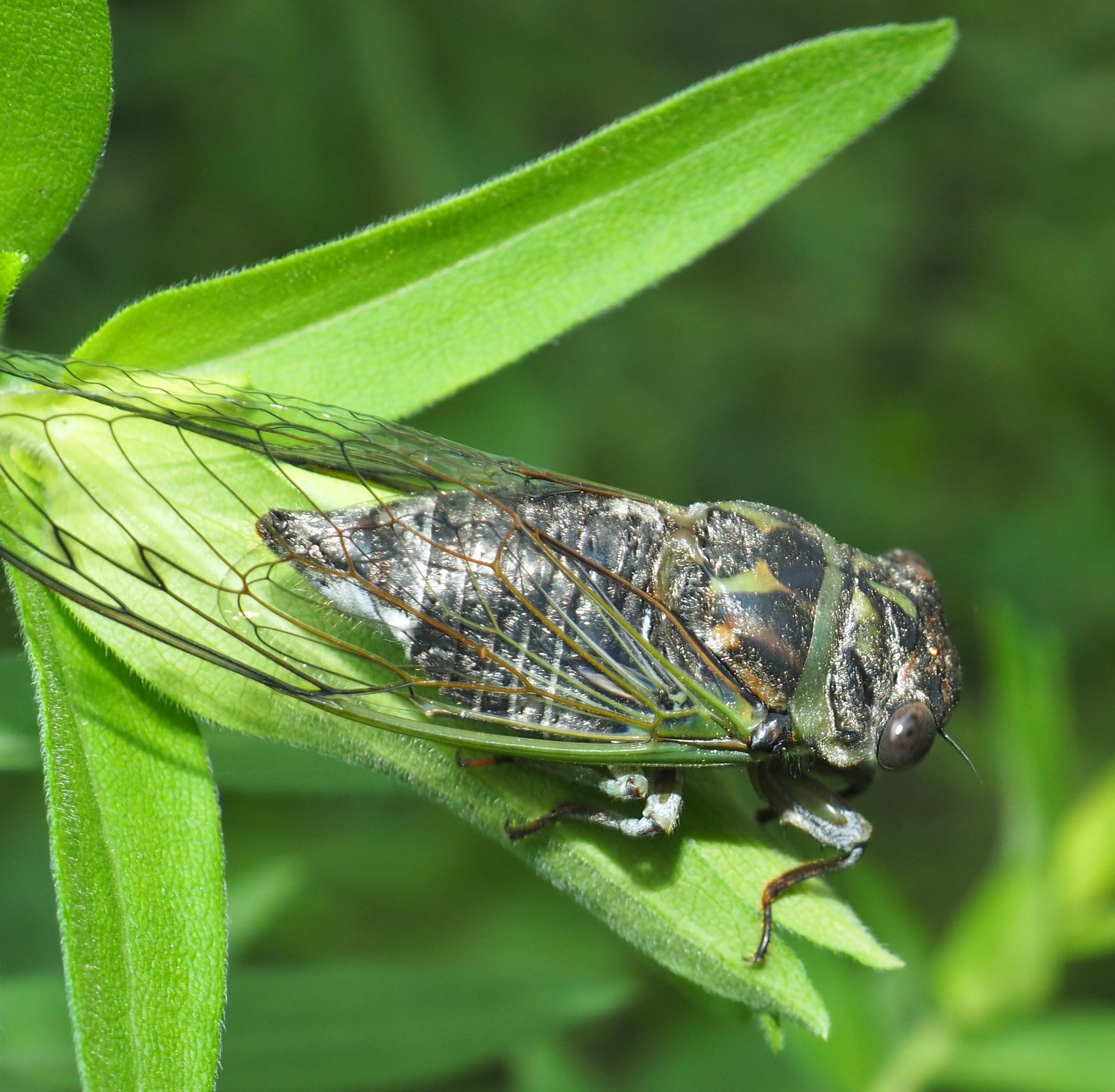
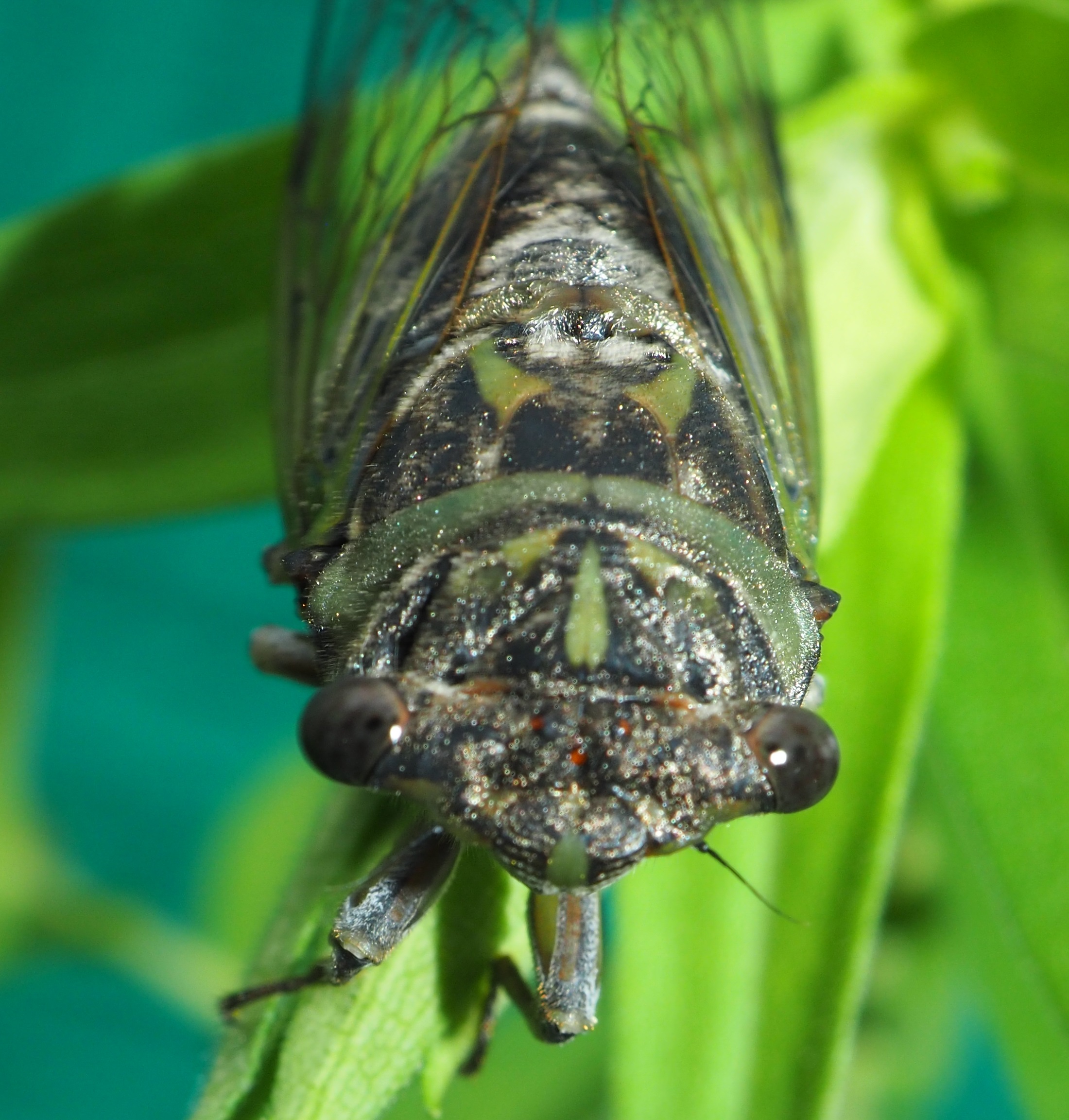 :
:
The stink bugs are out in force these days. Most of them are these pretty mostly shades of red and grey ones. (Linguists: Where does that "ones" go?) Most of the rest are BMSB (Brown Marmorated Stink Bugs) of younger instars. Note that these all have a white segment to their antennae, just like the adult.
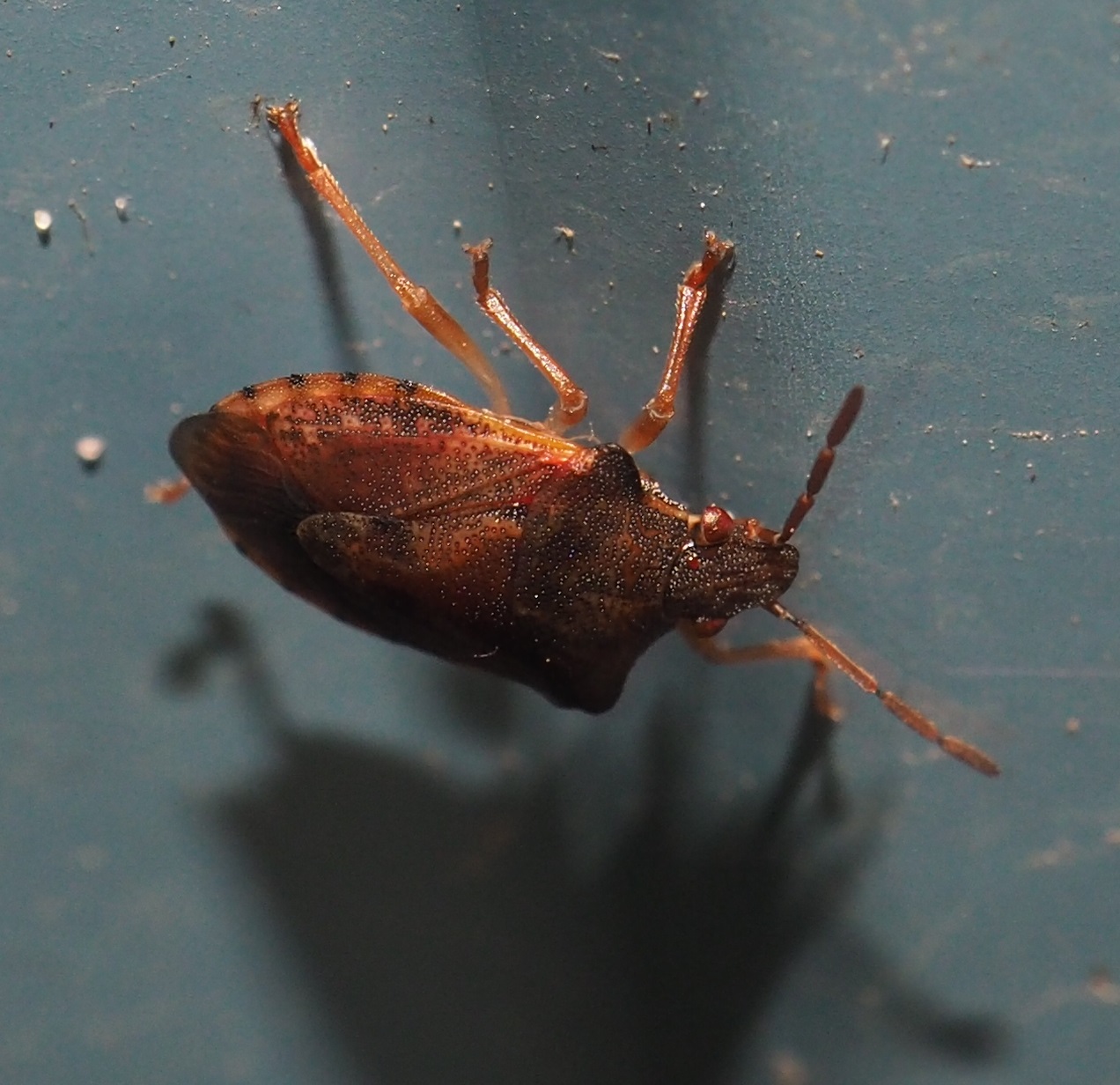

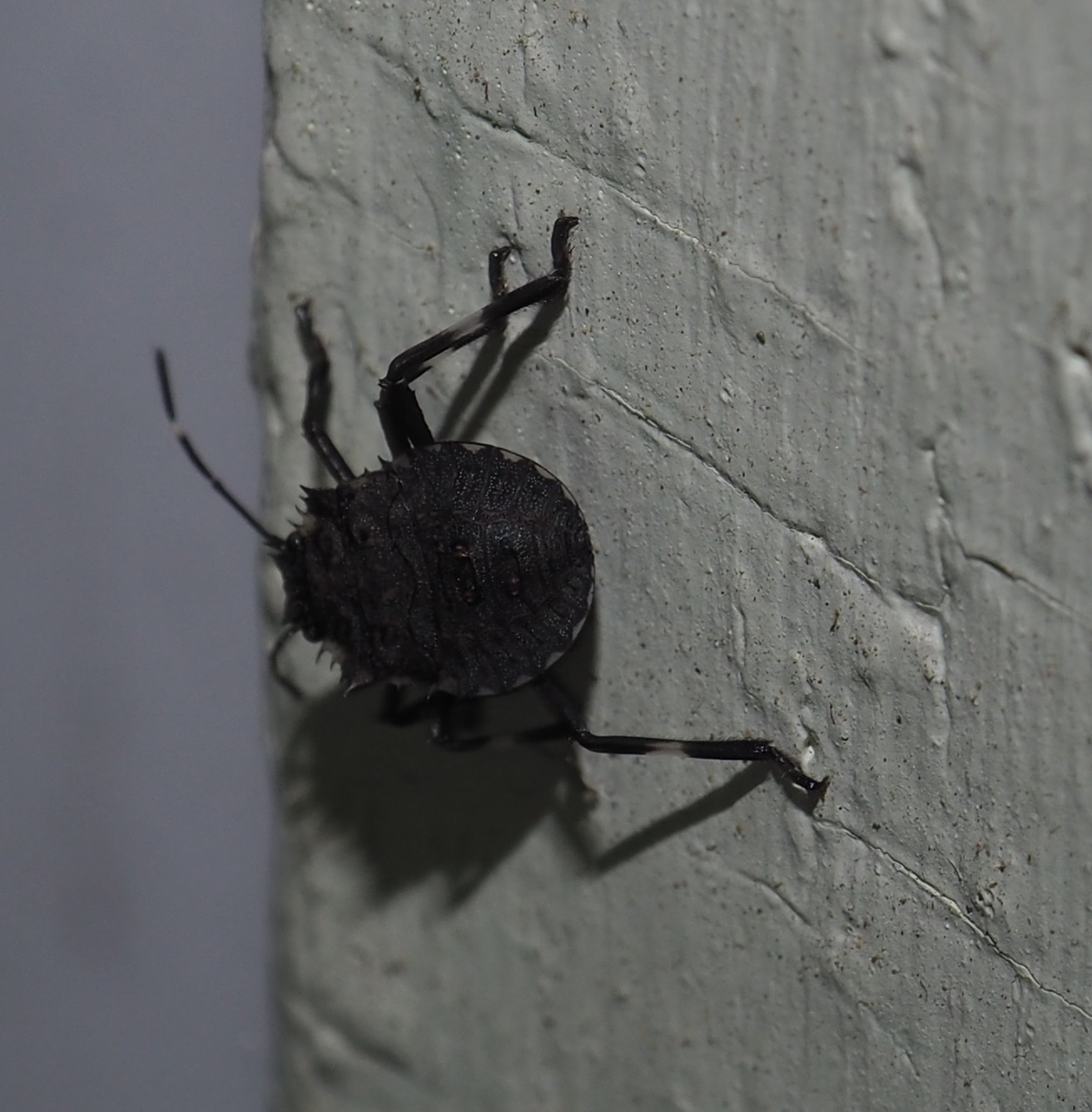
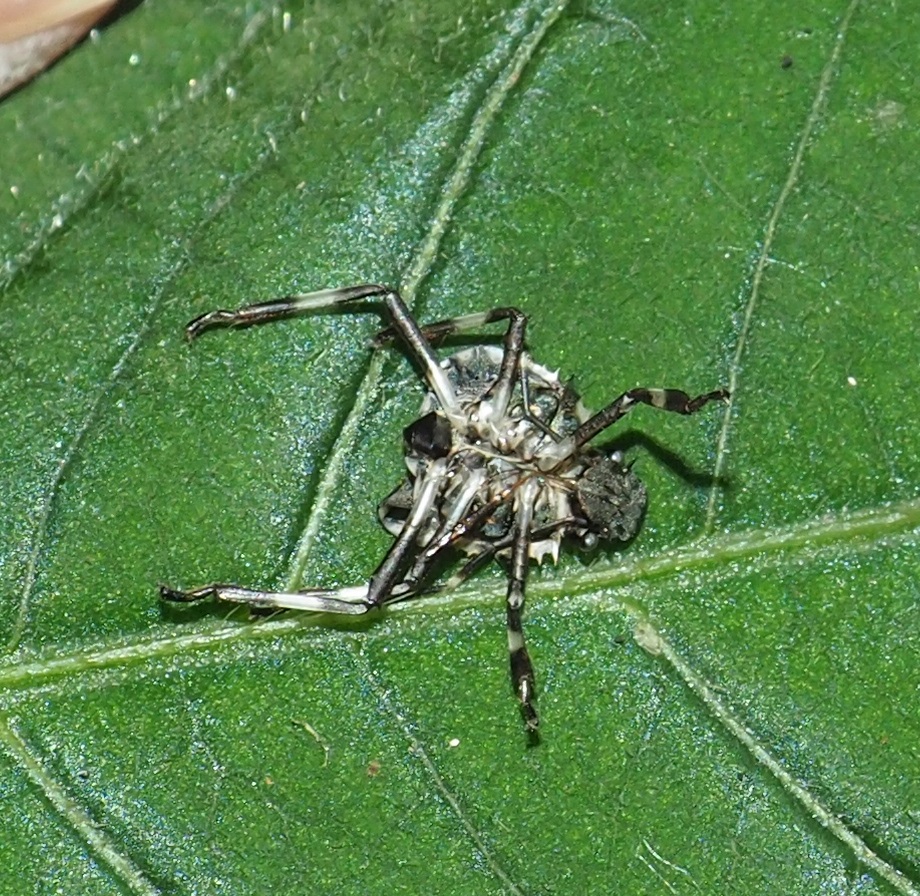
Here is a family (I think) of Mirids (I think). The adult seems to be the one with green coloration and wings. Below it there is an empty shell, perhaps its own. There are other nymphs of various sizes in the assemblage. Second is a plant bug, perhaps a Lygus bug hiding in a garden of goldenrod. Here are an almost black earwig (picture 3) and a pair of European earwigs (note the light pattern on the thorax).
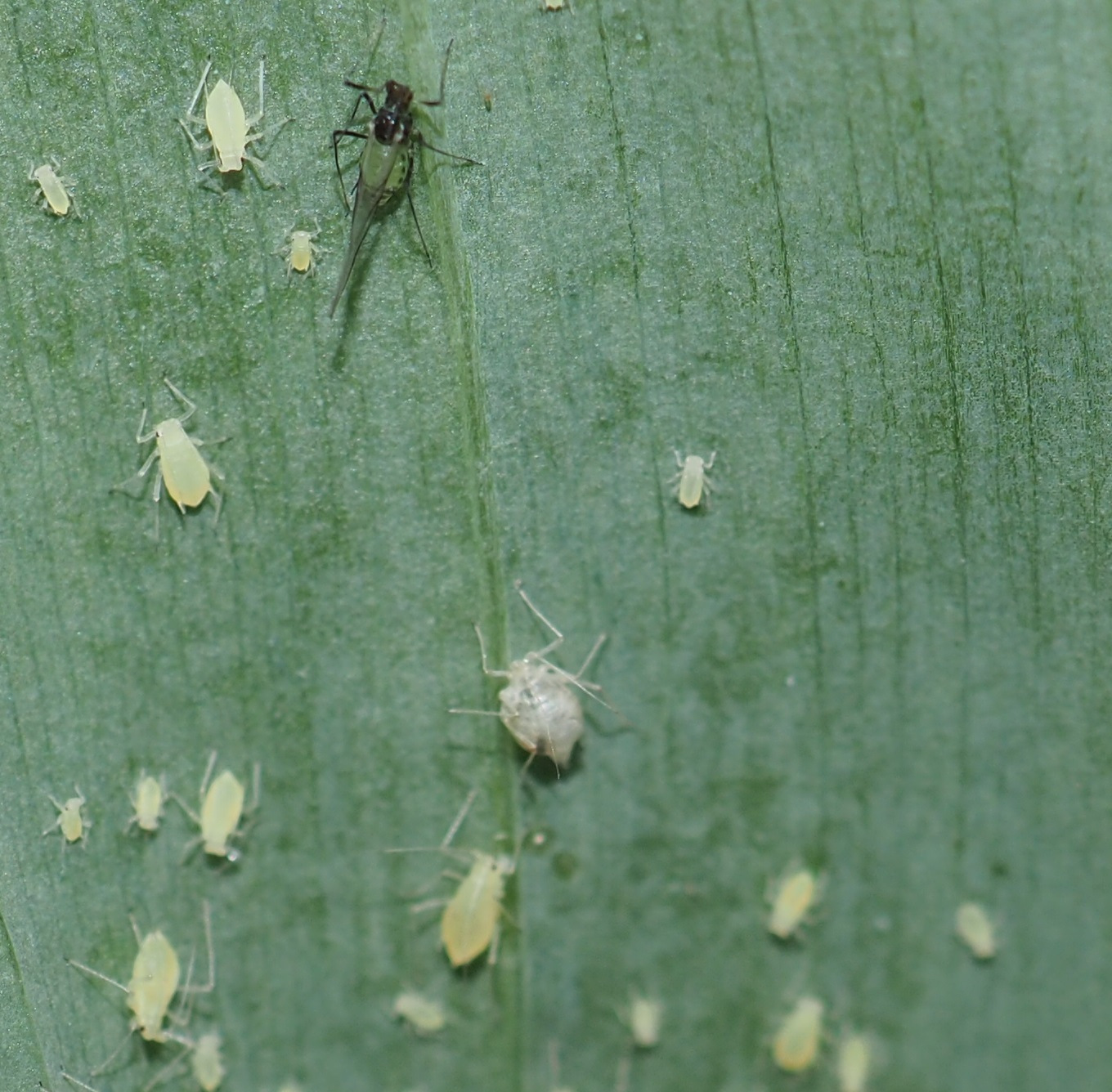
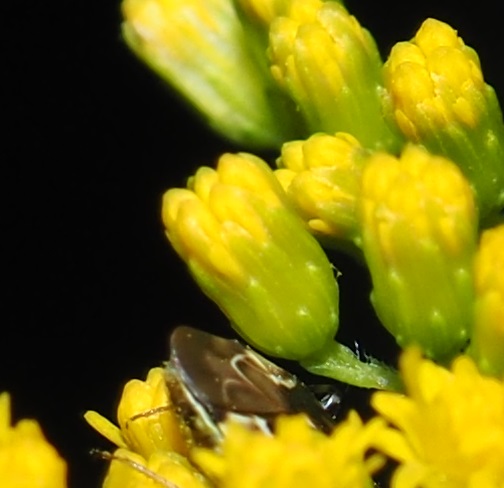
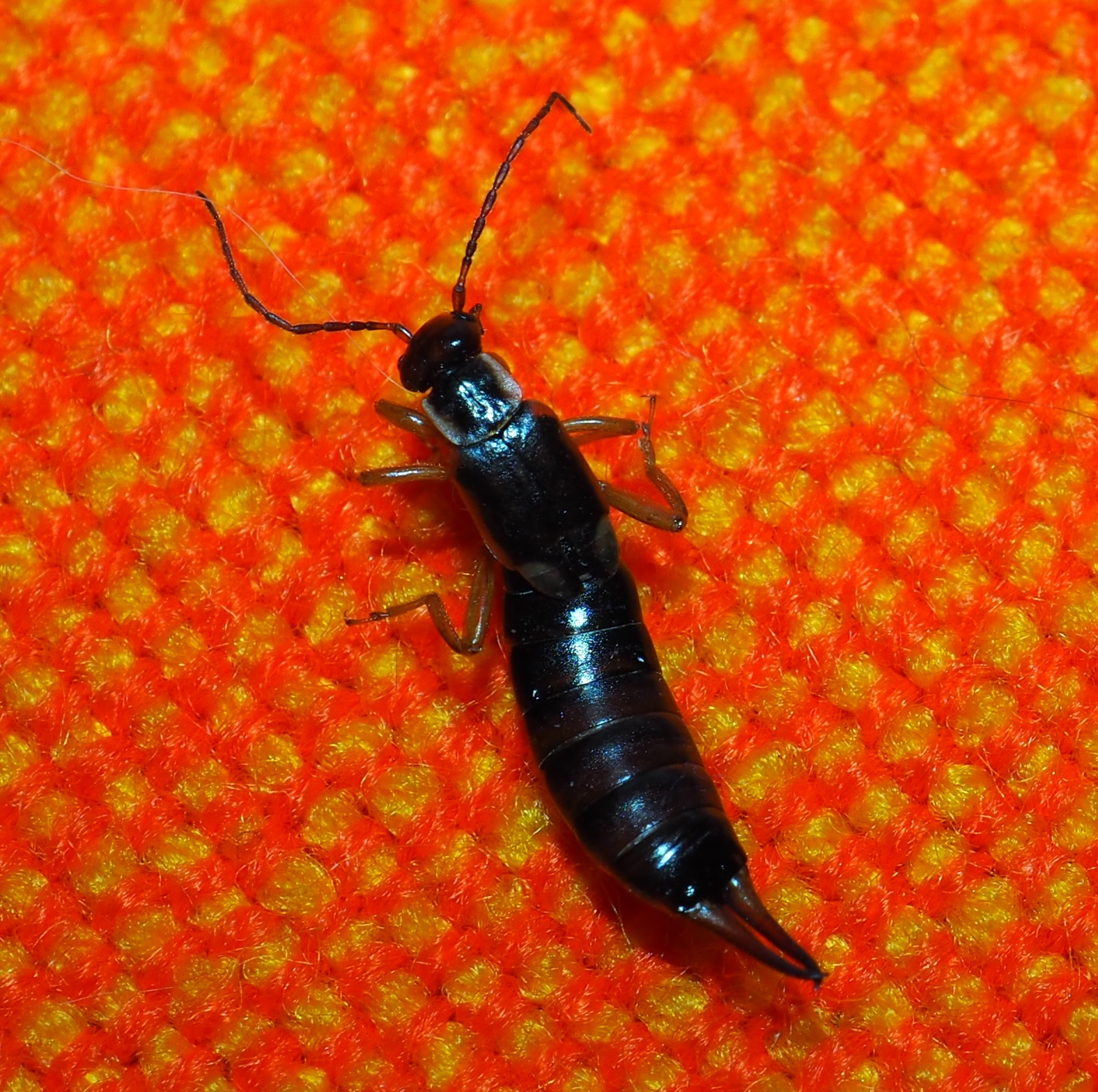

Here is a Tachinid Fly. They specialize in having lots of spikes. Number 2 is also hairy and spiky, and seems to be a flesh-eating fly. Third is a blue-green Bottle Fly.

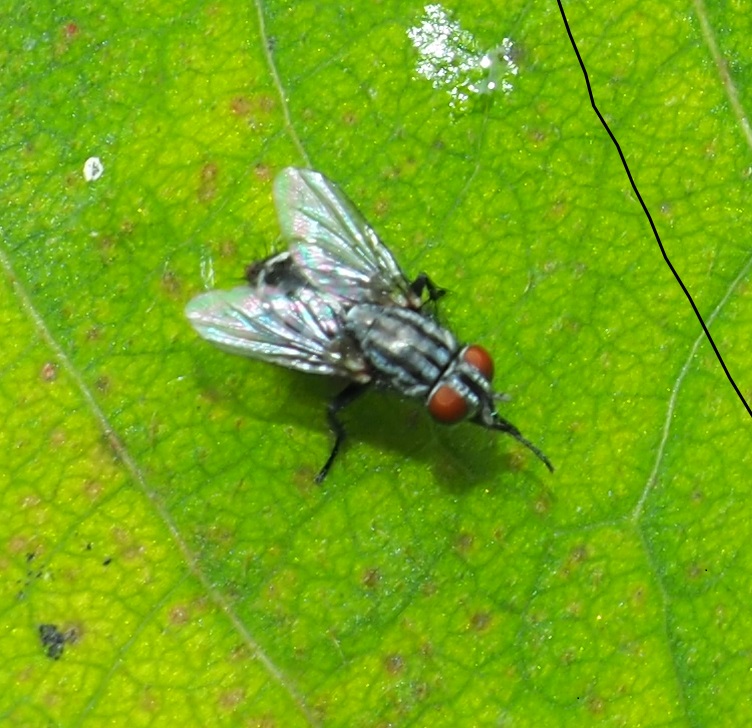
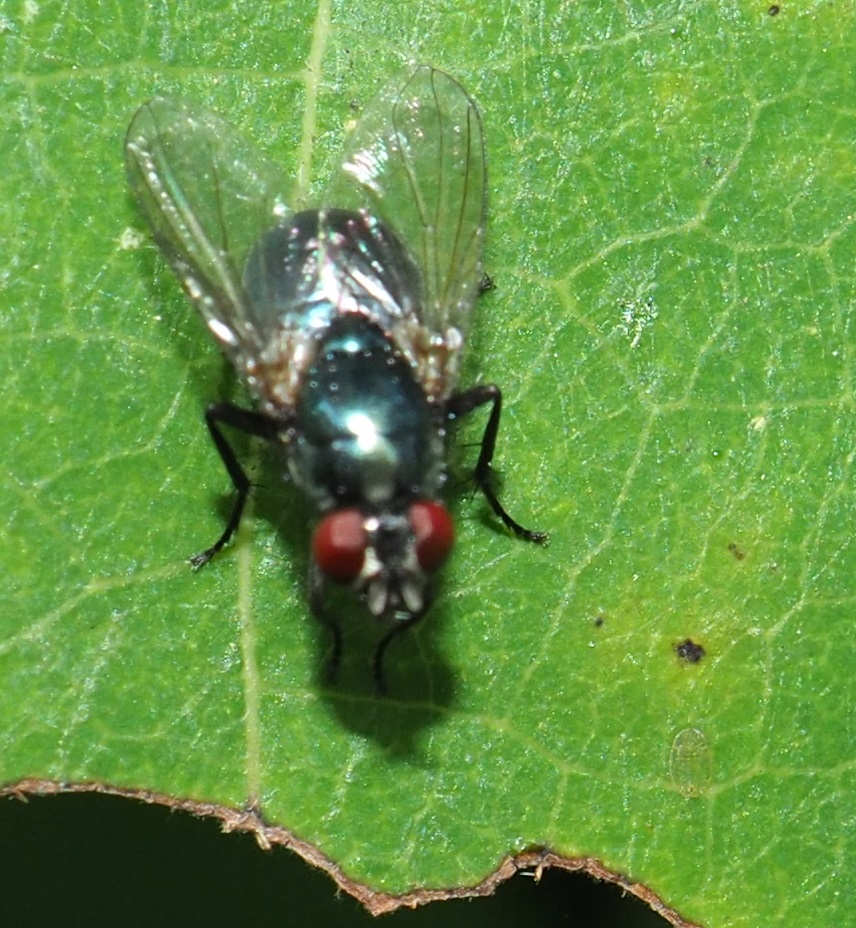
A few more of those ones shaped like House Flies. The first fellow is the super-abundant Root-Maggot Fly. Second is a very tiny black fly with red eyes.
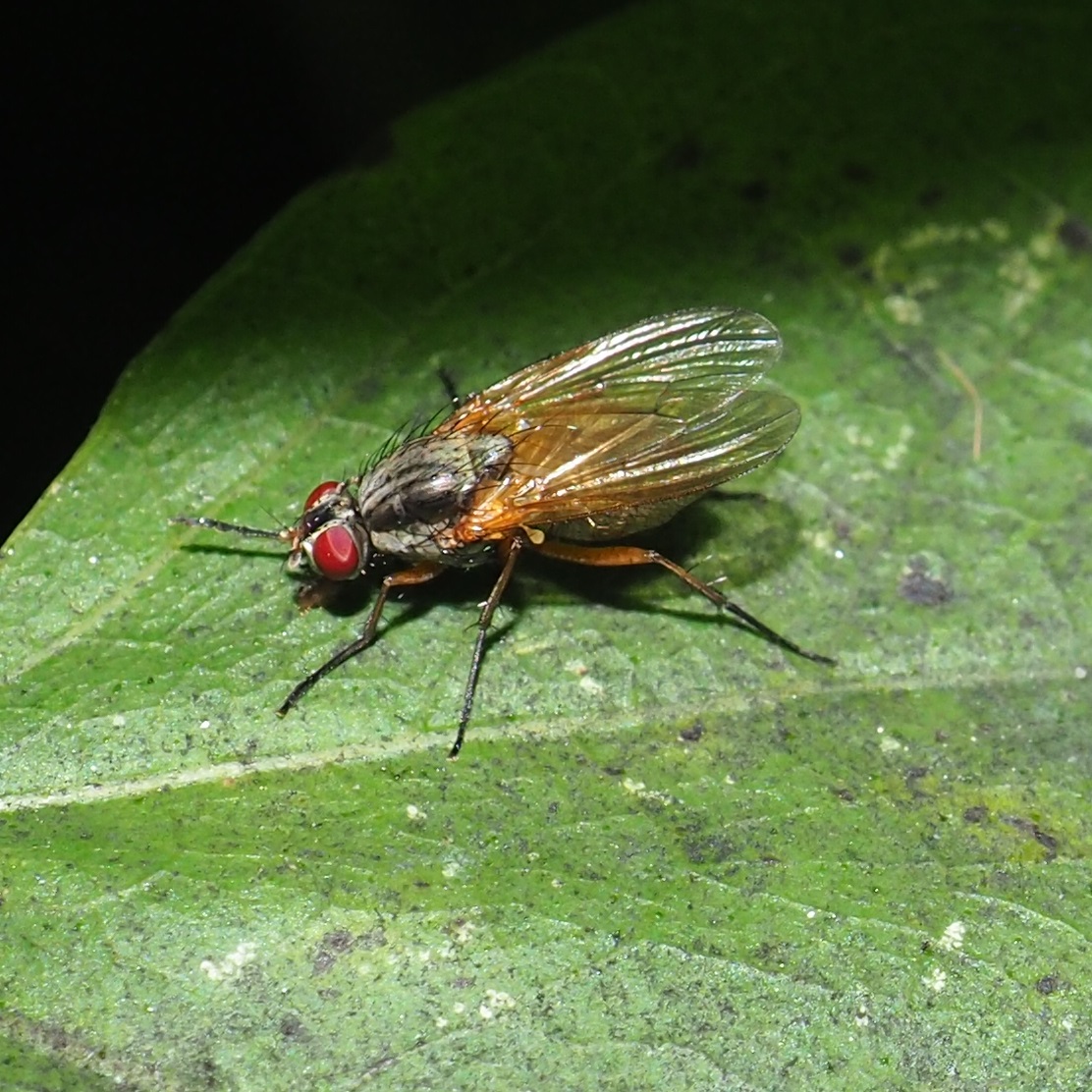
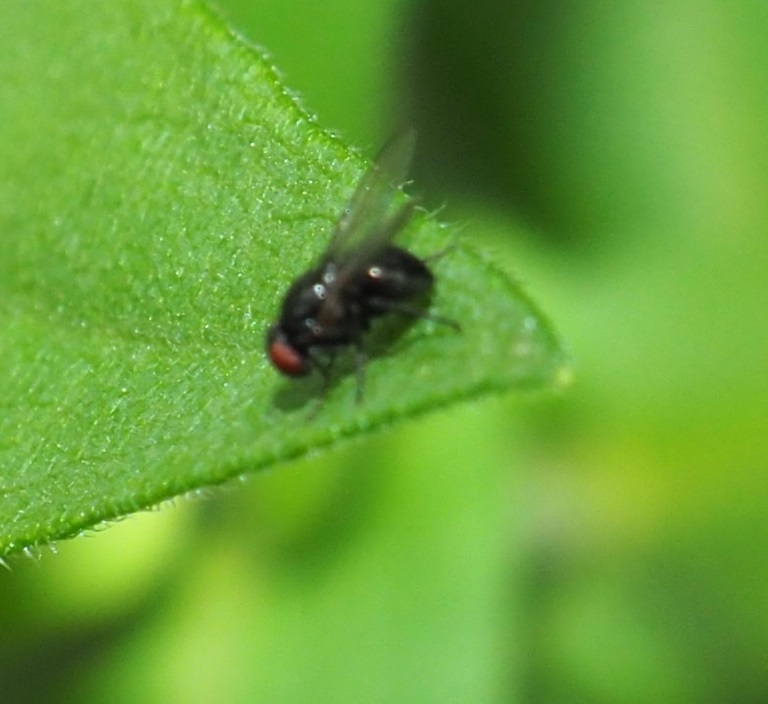
Here is a Tiger Bee Fly. These three animal names mean it is a Fly. What kind of Fly? A Bee Fly - someone must have thought it sounded like a bee. Finally, a Tiger Bee Fly. Maybe the namers thought it was stripedy. Second is a Gall Midge (a fly). Next is a Chironomid Midge Fly. A male.


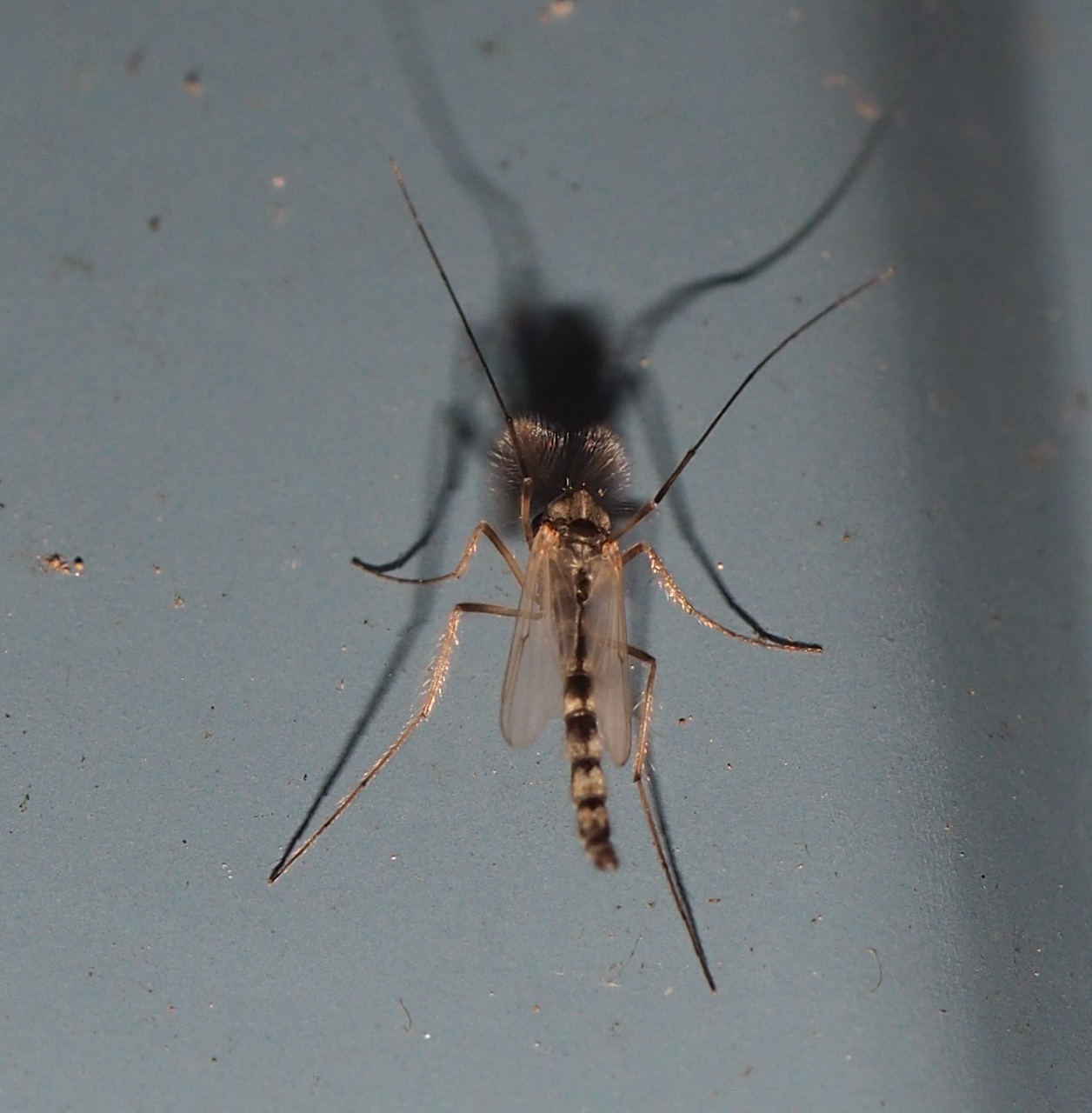
The Moth Flies are getting very numerous these days. They come in many color patterns. The Orange Flies (not an exact denomination, but a popular color among the Flyboys.) seem to be rather fat these days. (Pregnant? Possibly. You might ask the same question of the Minettia lupulina in third place below). Fourth: a sinister picture indeed. Some iridescent creature (maybe a bottle fly or a long-legged fly) has been submerged almost entirely in foam. Or is the shiny life form emerging from the foam? And what is the pinkish creature just above the foam?

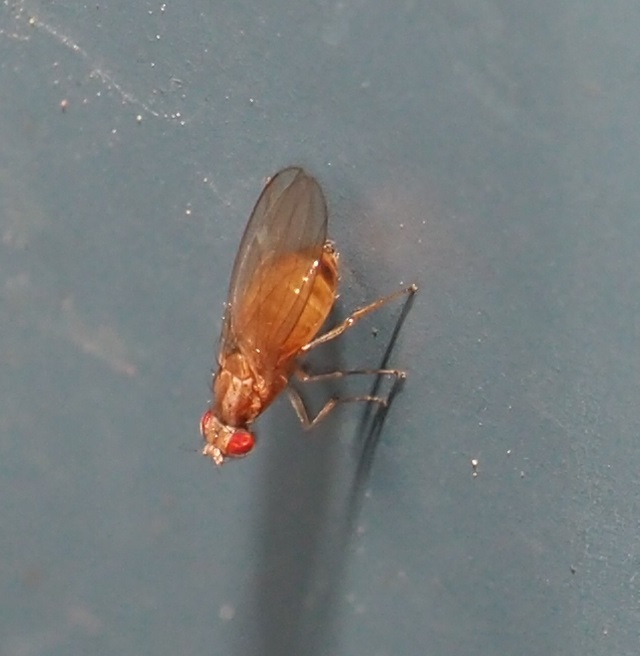
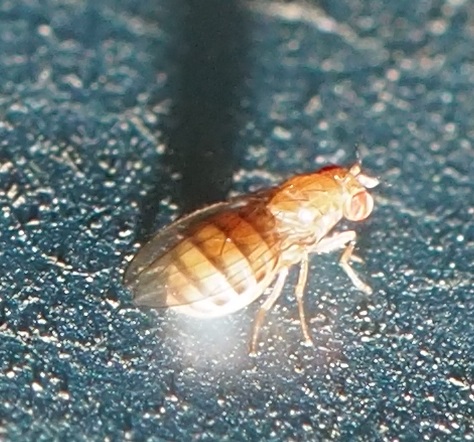
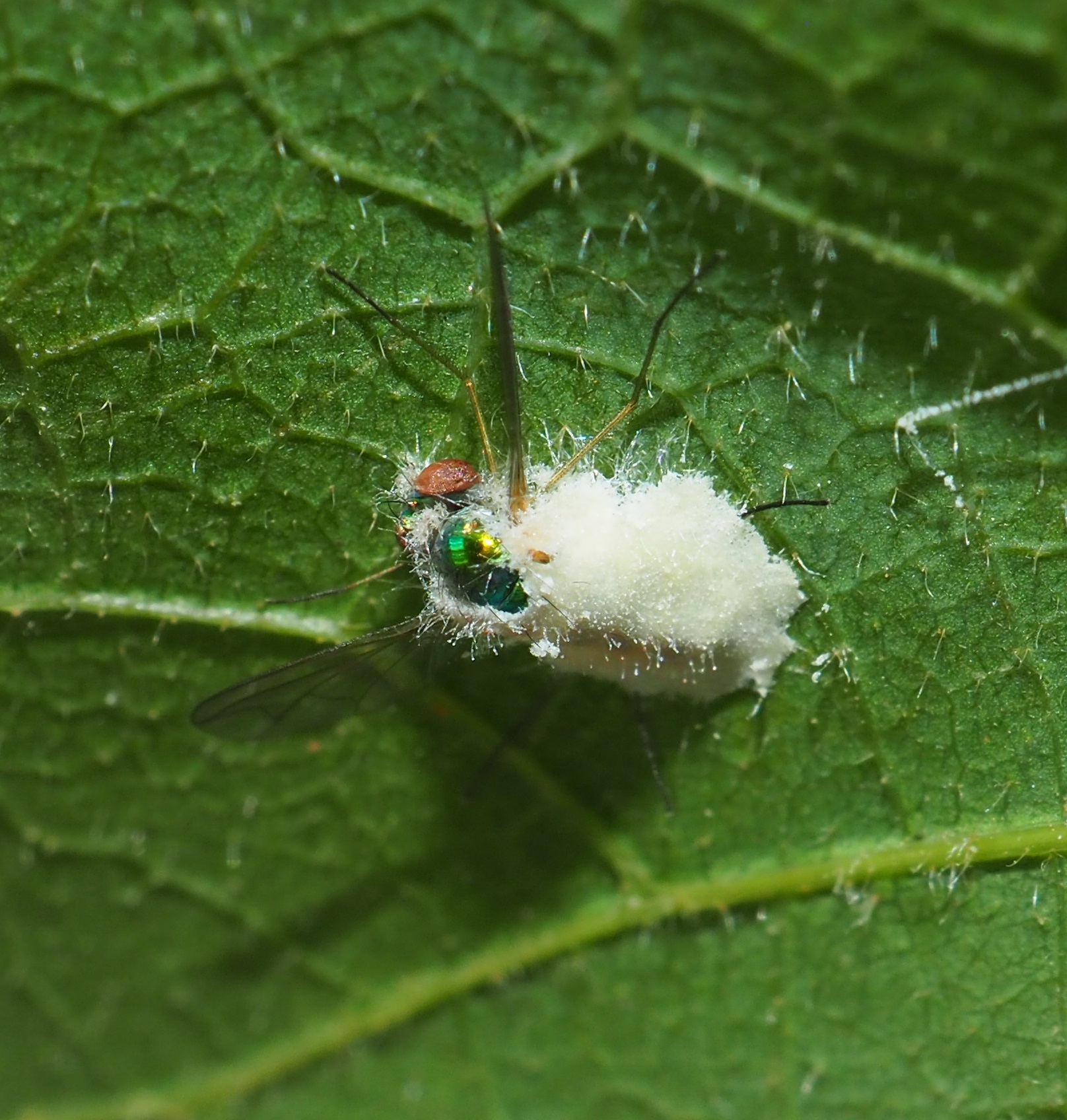
Life does go on, and so do the various denizens of Nature. Minettia lupulina seems to be pregnant, like several of the ones above. I don't know anything about the Red and Black fly. Now I've seen a White Fly. I always thought they were the planthoppers that were so common a few weeks ago, but now I've seen the difference in the two. Hosta is a popular place for wasps to gather, but here suddenly I didn't know how to compare a wasp to a fly, even though there are many photographs which make the distinction clearer now. (On the other hand, flies are well-known to resemble a wasp, even into adulthood.)
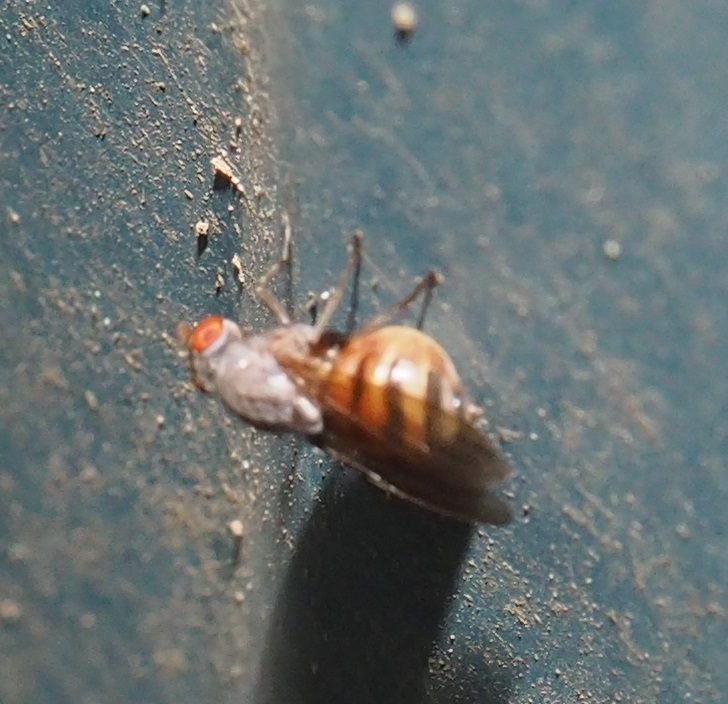
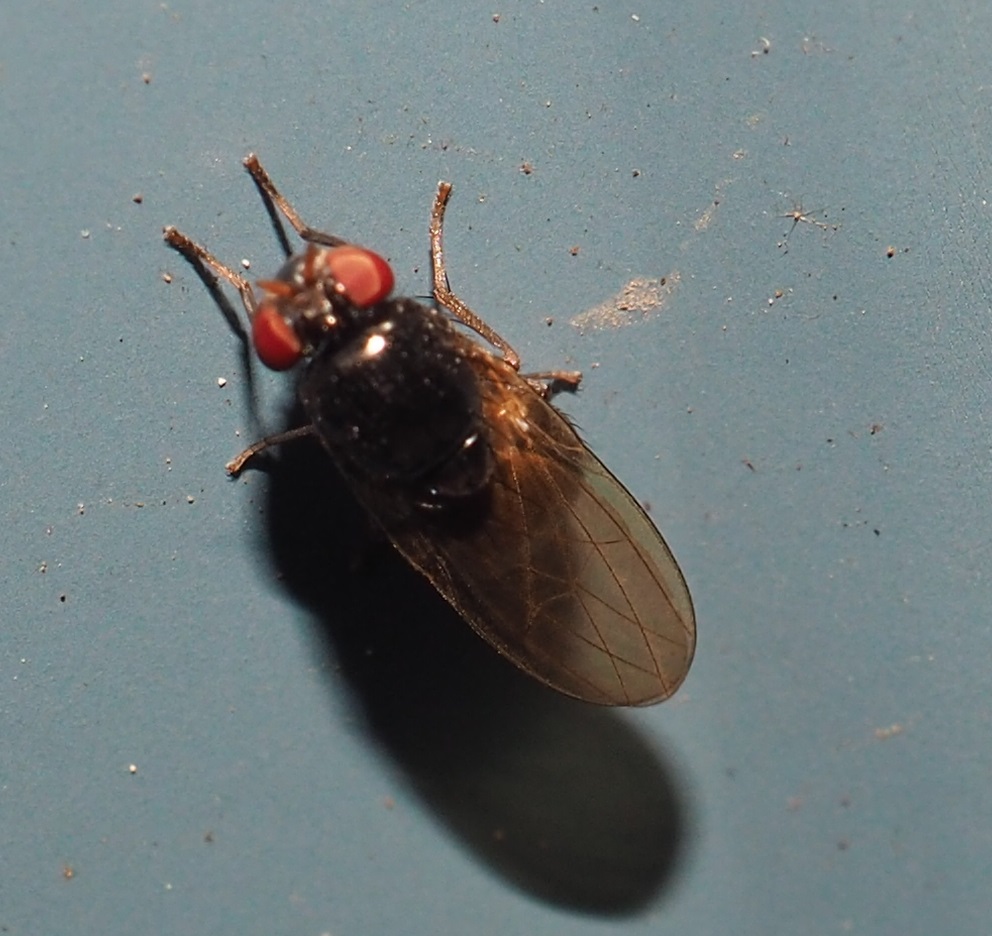
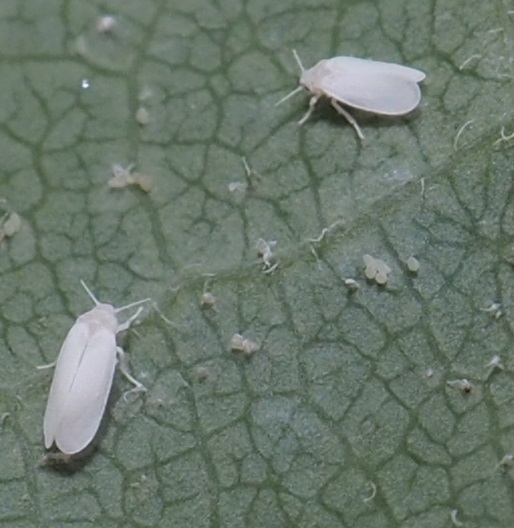
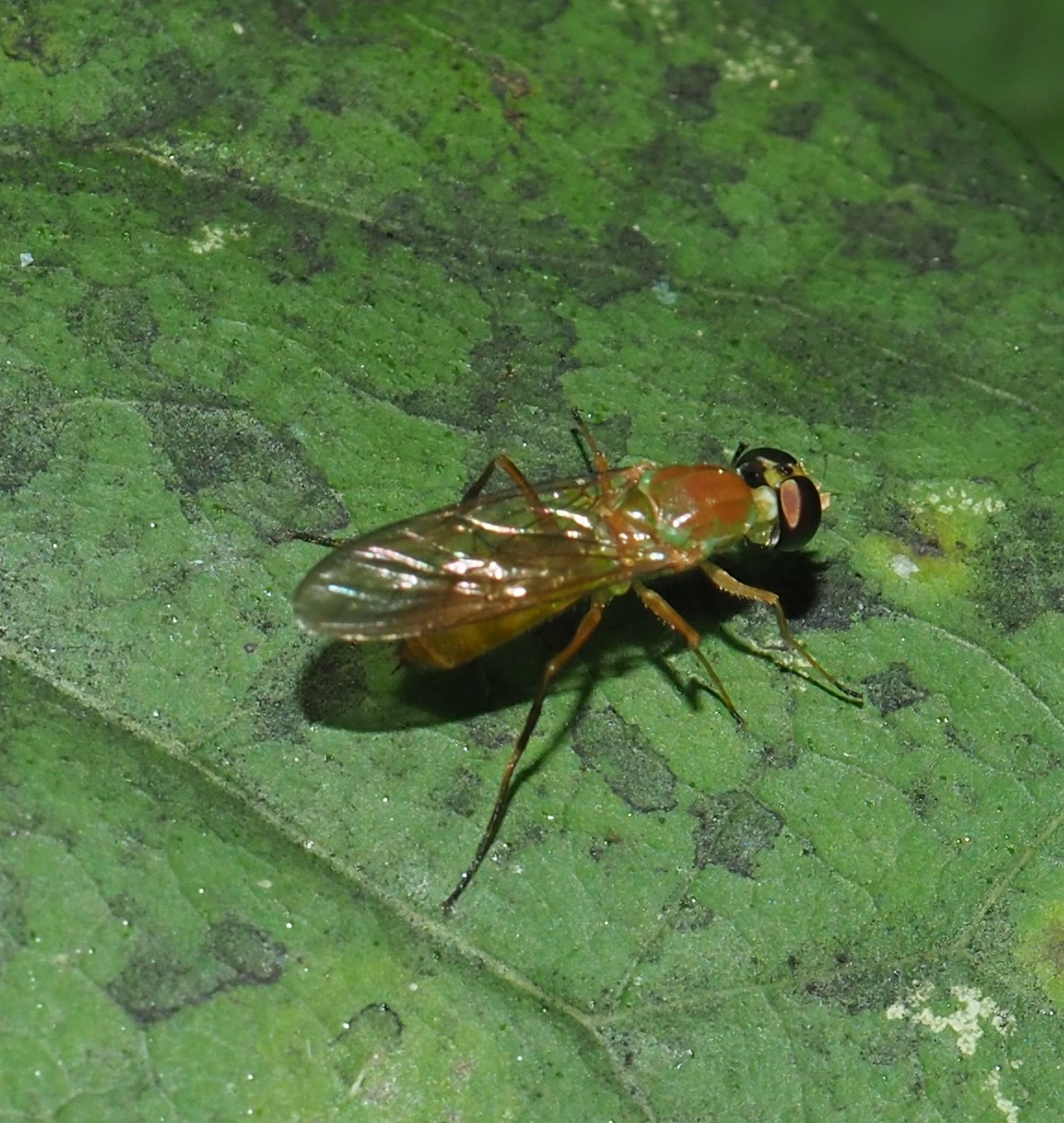
Oh! Before I get to the Harvestmen, I'd like to clarify the appearance of my new old friend, the male green frog that showed up in the pond last July. I've decided this is not Him. Male Green Frogs have eardrums that exceeds the diameter of his eyes. This new frog seems to have them almost the same size. Male Green Frogs grumble to you and tend to continue a conversation based on one word: garumph. It really makes you feel like a friend to Nature. Well, here are some better pictures of The Frog. She is much smaller than he was when the toads came over in April and sort of elbowed him out of the pond. He seemed to have survived the winter and continued the chat. But lately I've become more conscious of some differences. And from talkability and spot diameter this frog just doesn't seem the same. I hope she will stay around for a good while, but I didn't see her yesterday or today. So here are two pictures of the newcomer now and one of the frog from springtime. Last is the Frog from last year purposely staying out of the pond because of all the Toad Shenanigans.
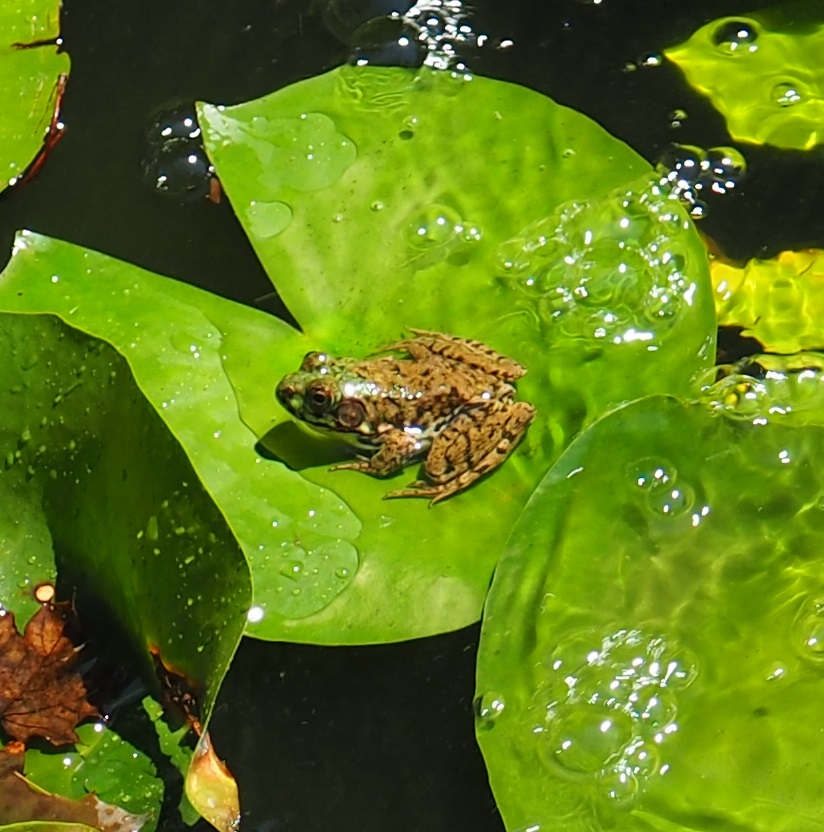


Here is a short display of Harvestmen or Daddy-Long-Legs. I especially like the subtle coloring of the first one.

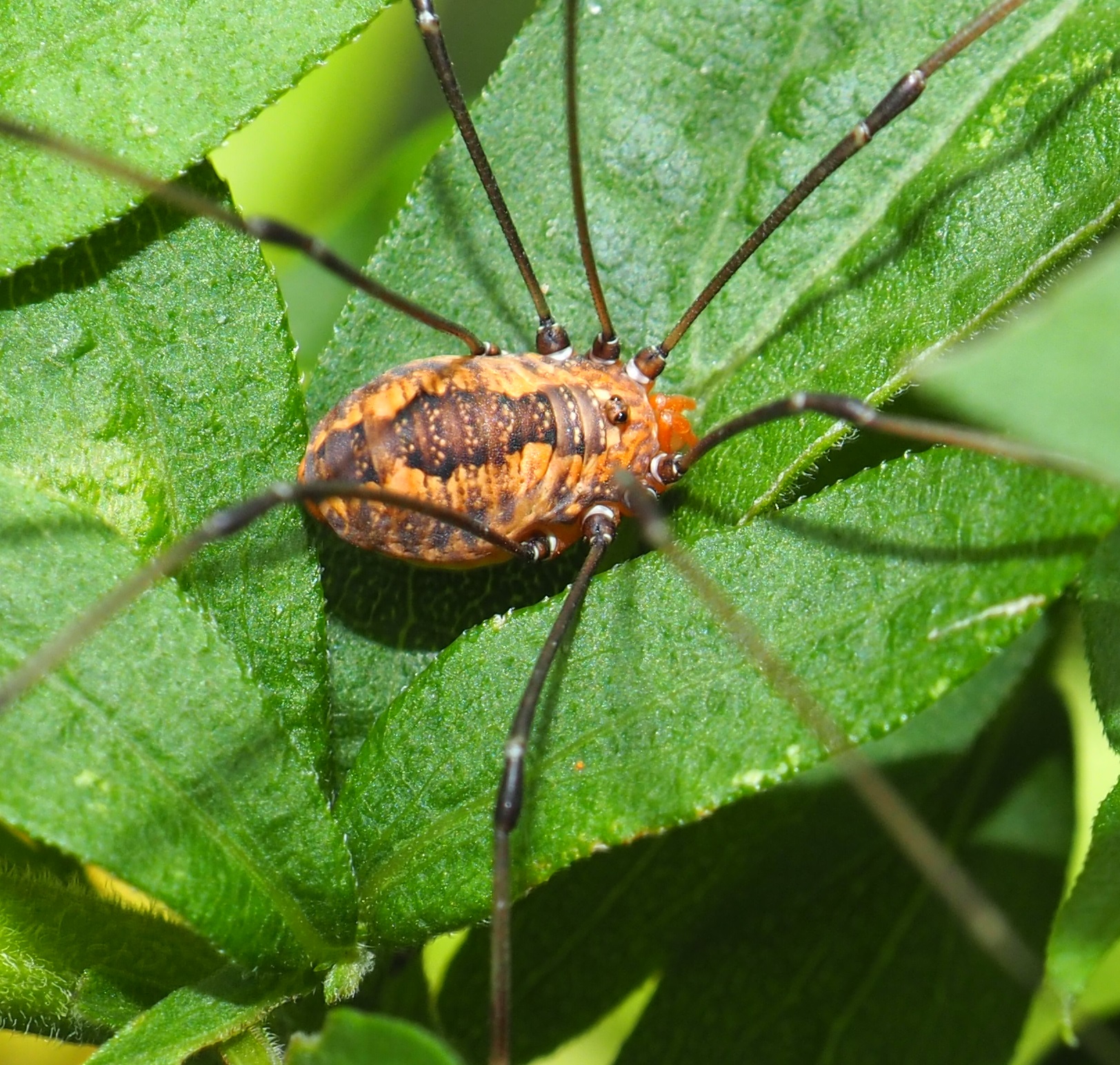
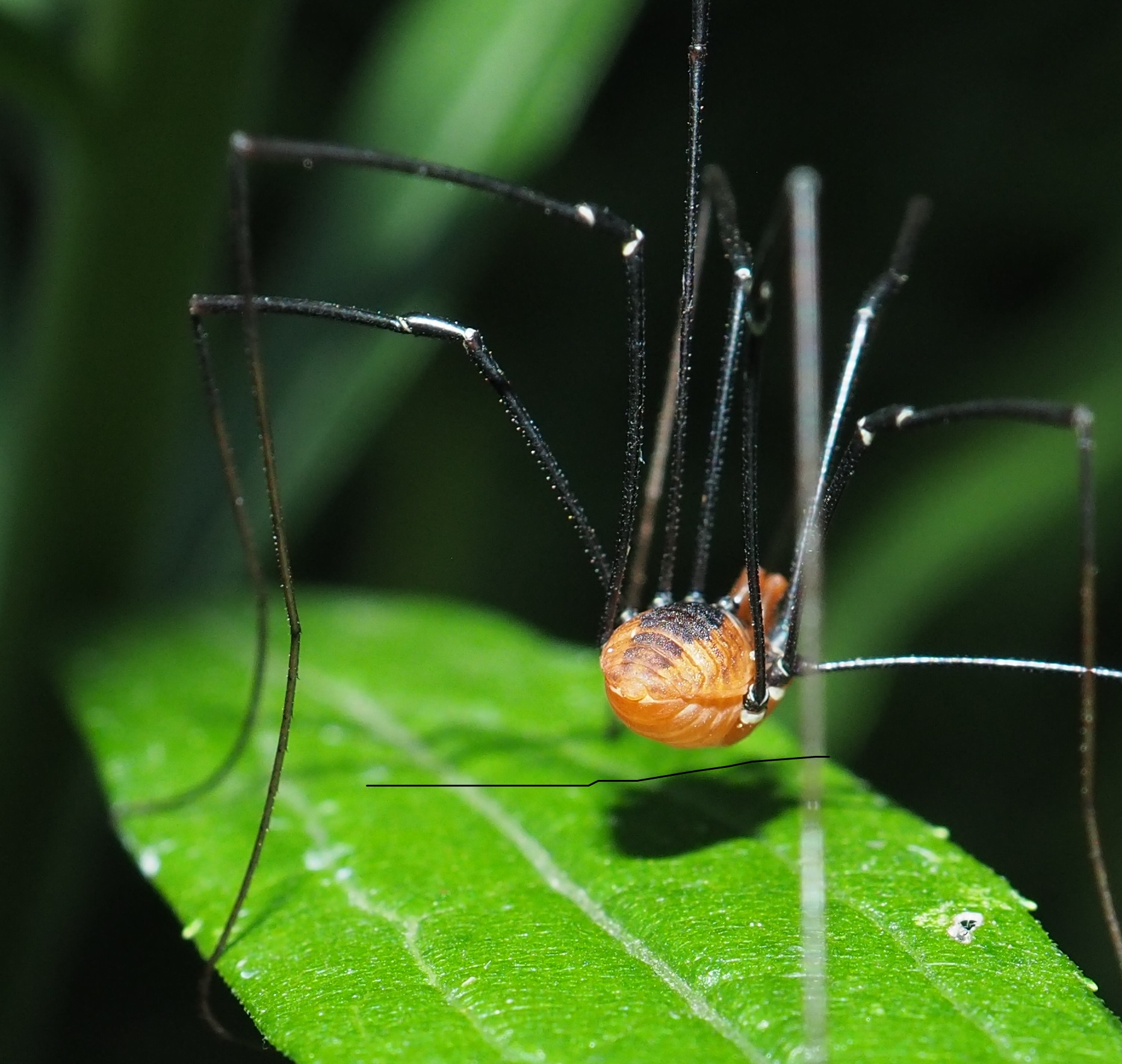
Moths and Butterflies! A Monarch Butterfly has flown through the yard several times in the past week. This day it flew into the shade and sat a while, long enough for me to get a pretty good fix on it. The second and third of this row are a new Butterfly.
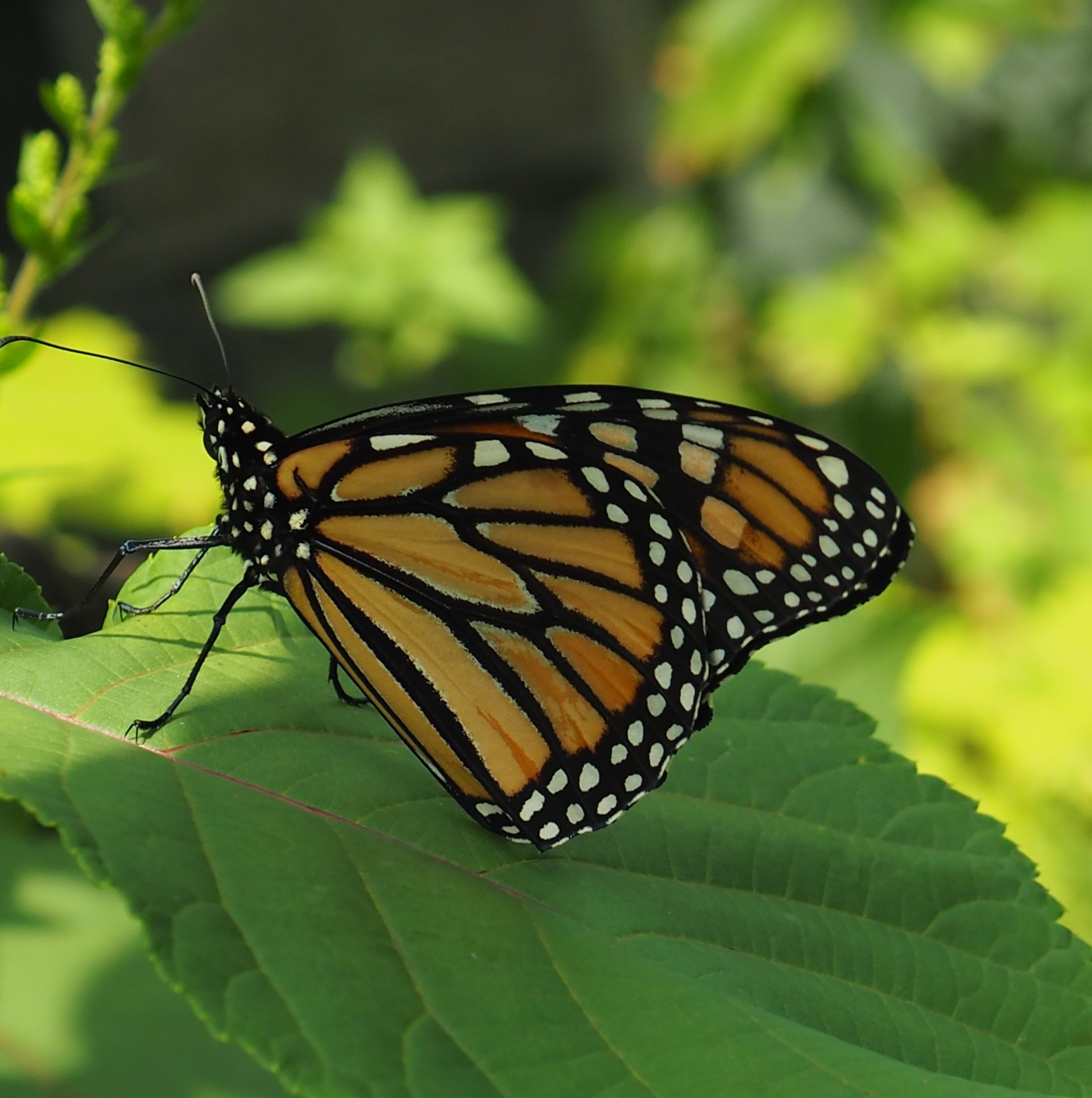
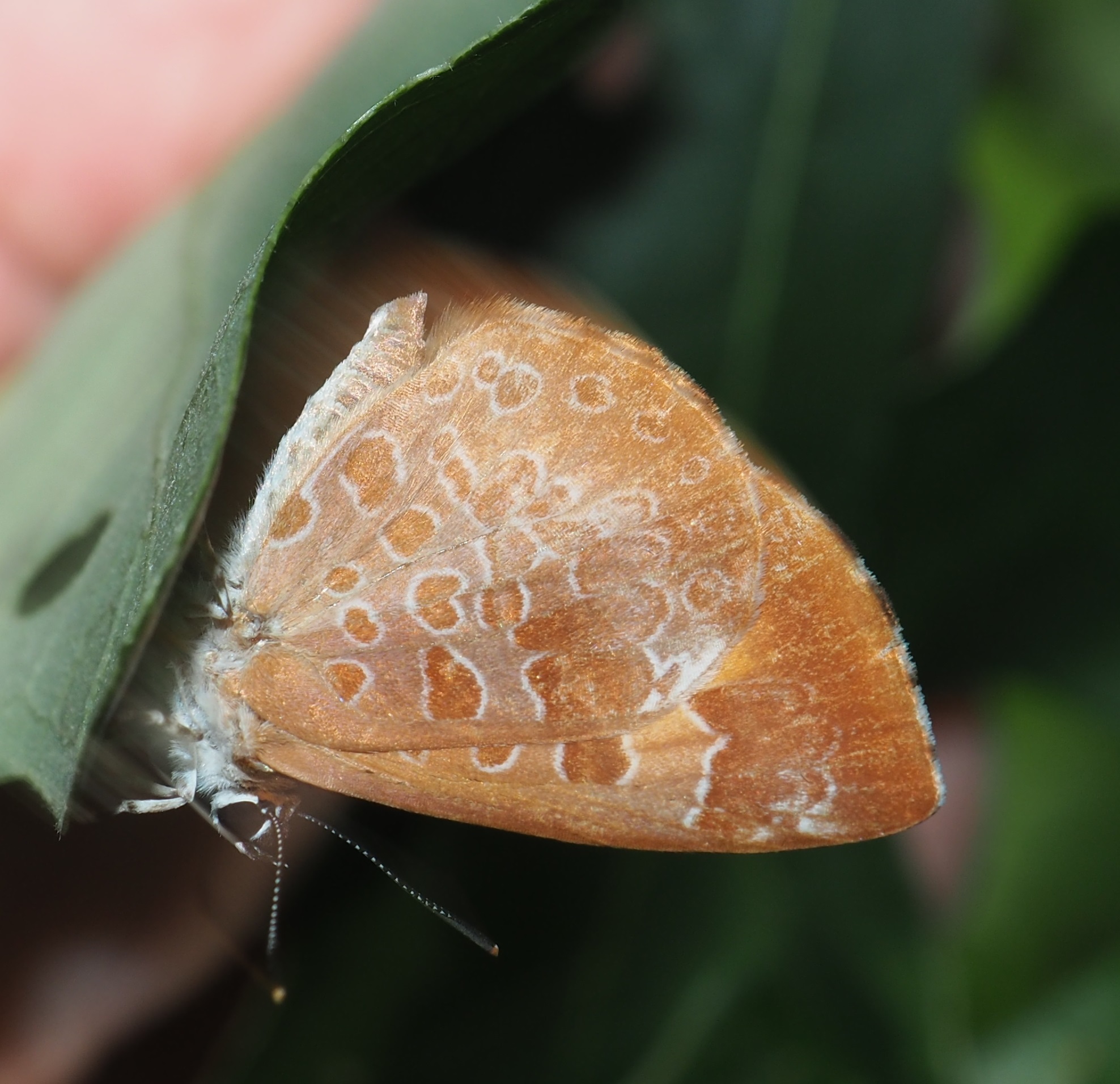
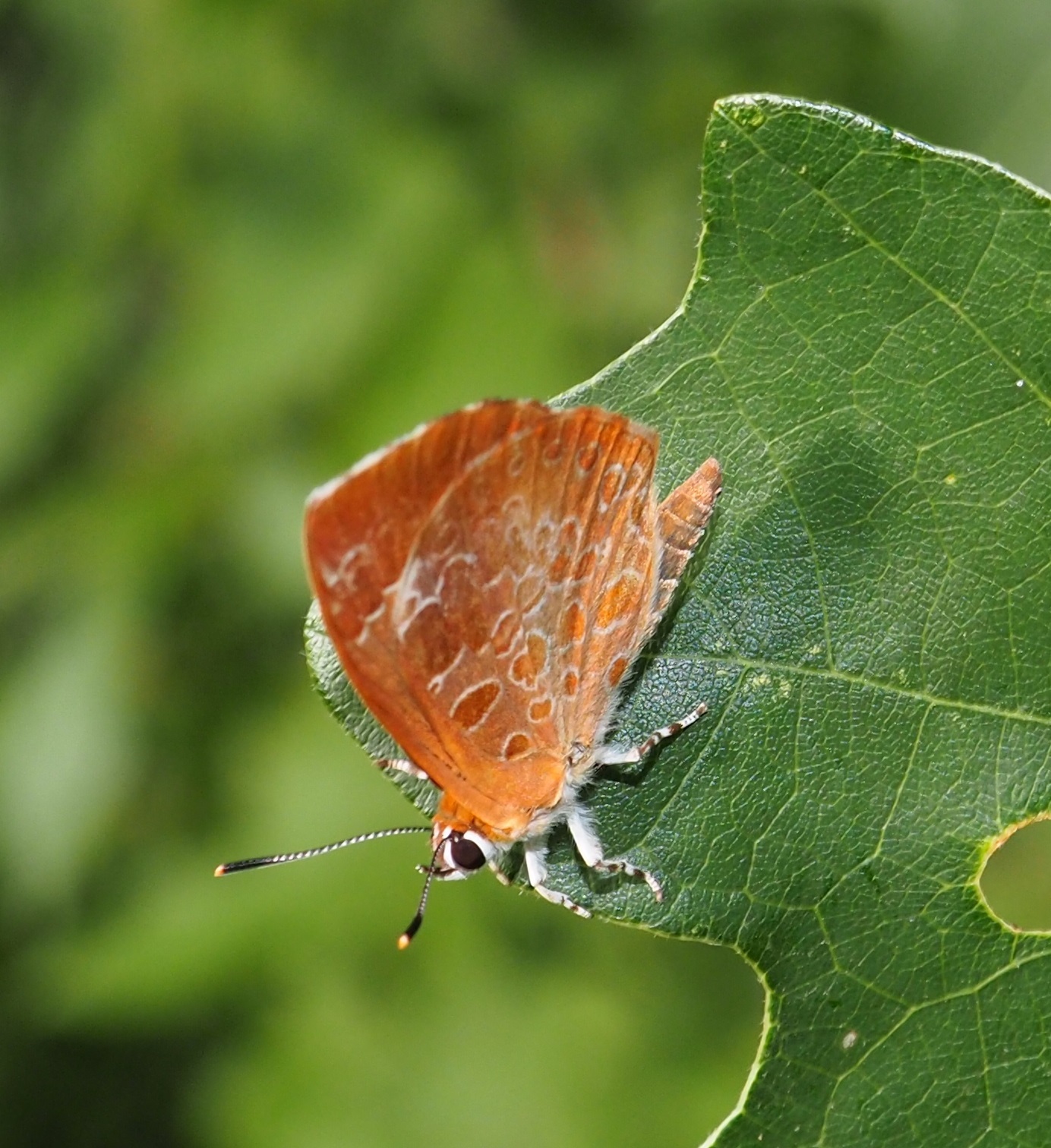
Here is a little moth (I think) I found on the shop wall.
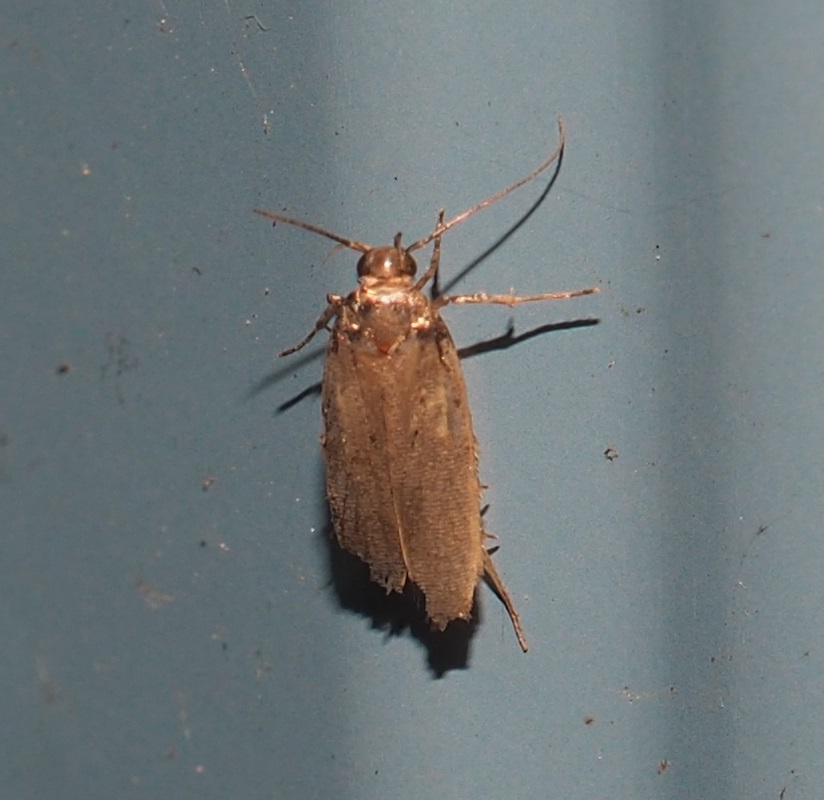

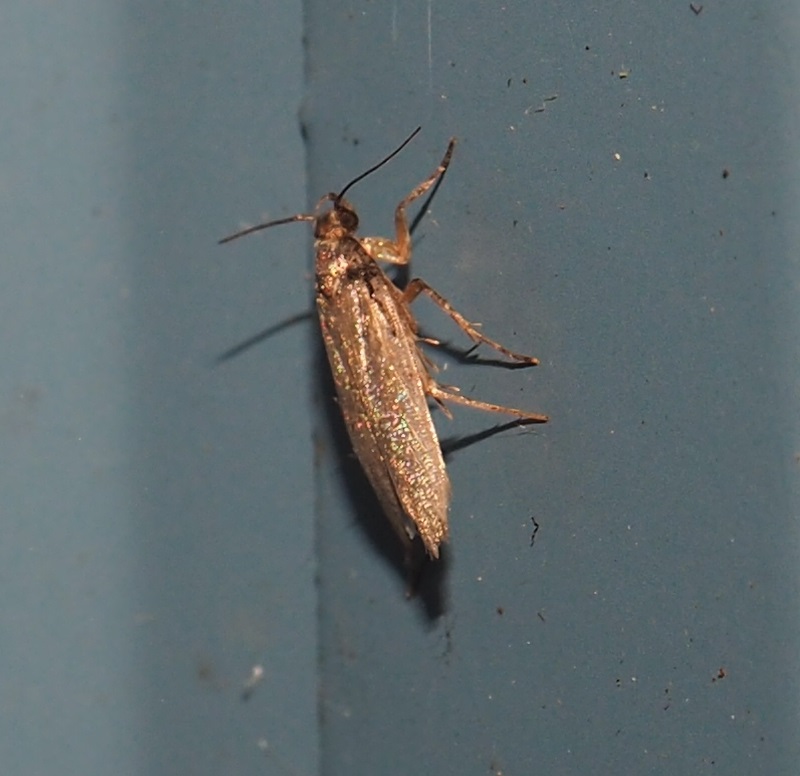
Here is the round thing I was told in childhood was a gall. So I thought there was one kind of gall. But now we have found lots of kinds of them. This is a pair of galls probably made by a wasp. What do you think the tiny hole is for? Second is a gall with no perceptible hole. The third (sorry about the fuzz) picture is of a batch of galls on an oak joint. They may be of a different etiology, whatever that is. The last picture shows some growths that I've never heard talked about on goldenrod. Are they related to the pink and yellow ones in last week's blog?
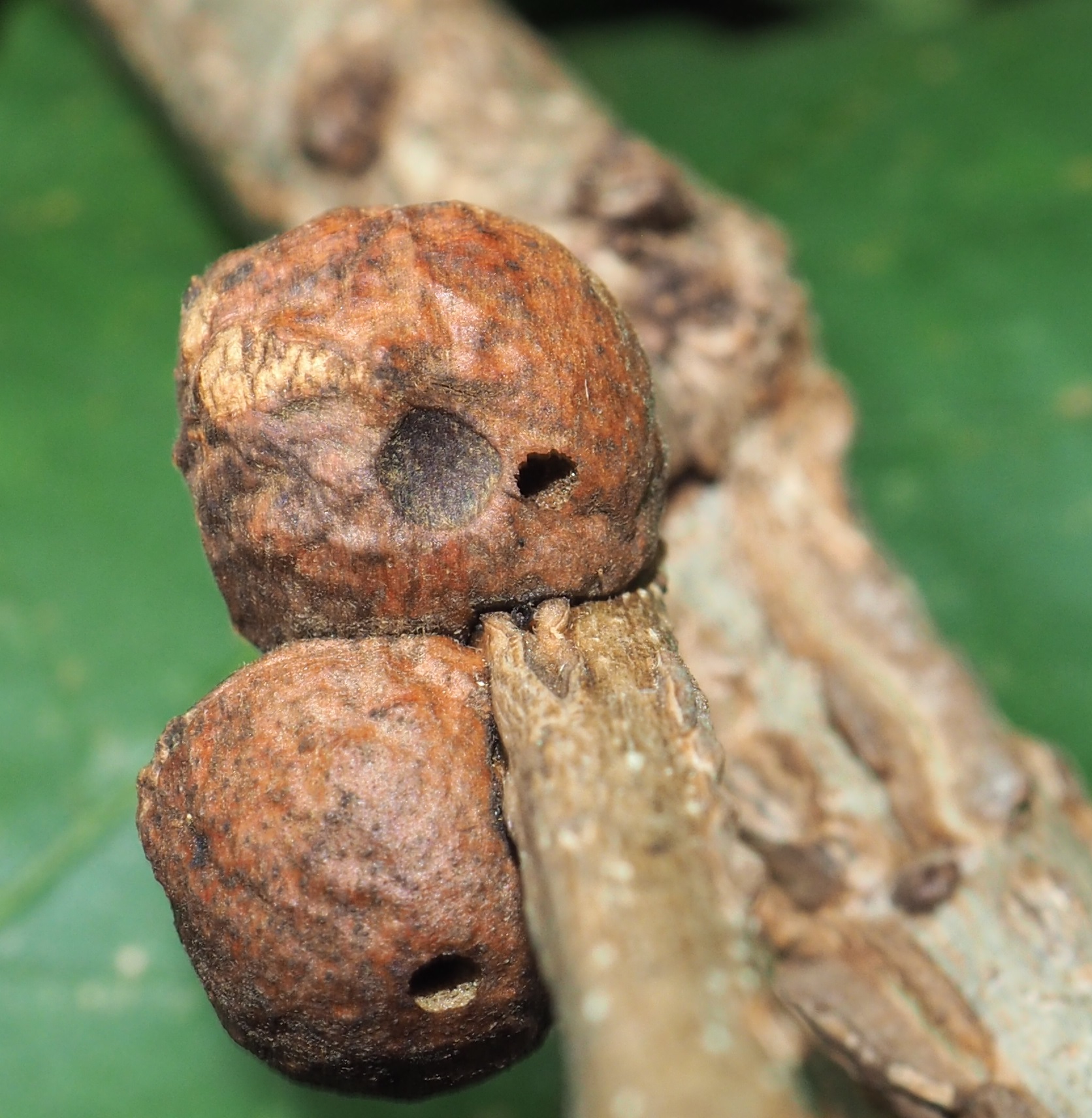
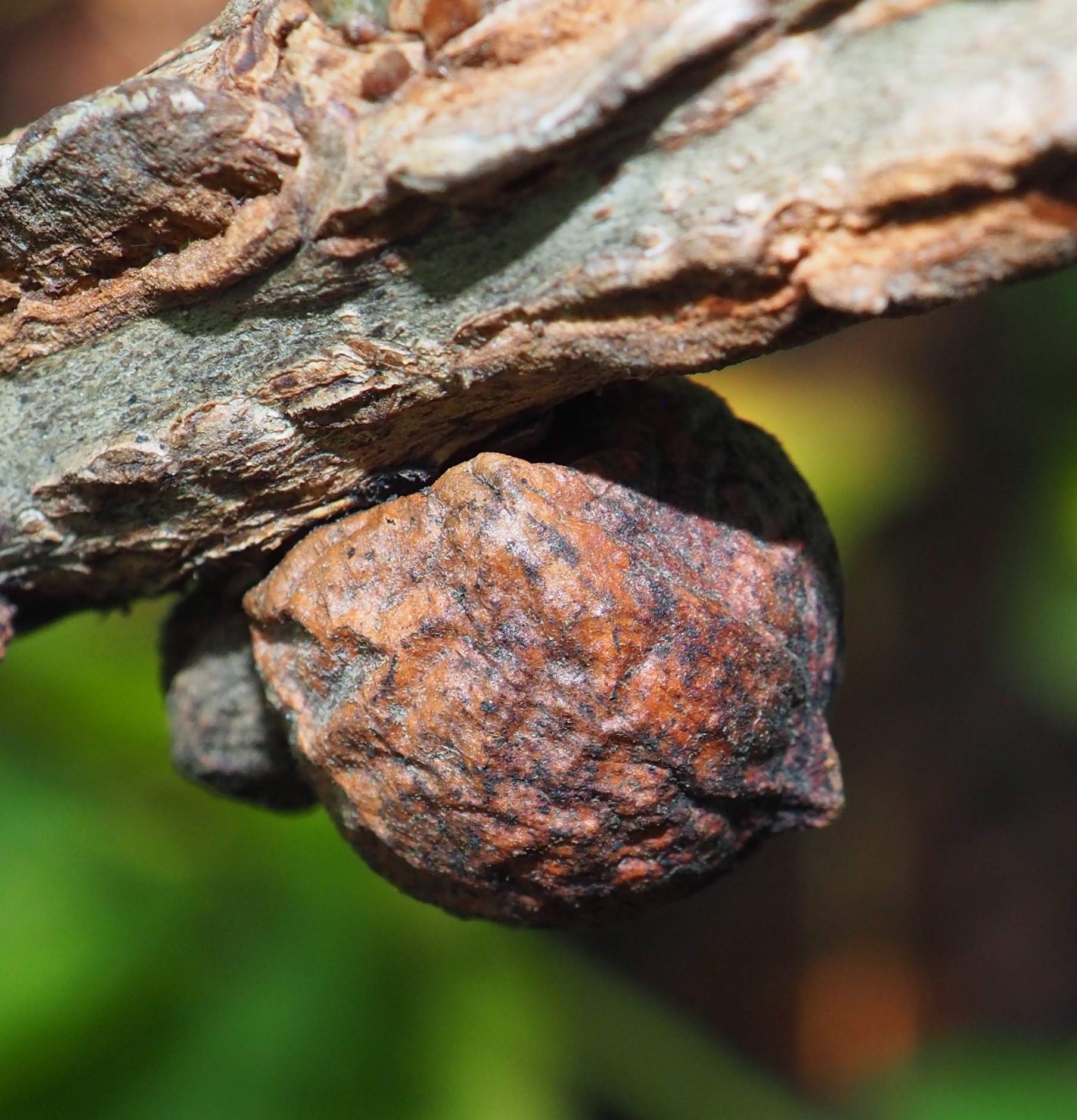
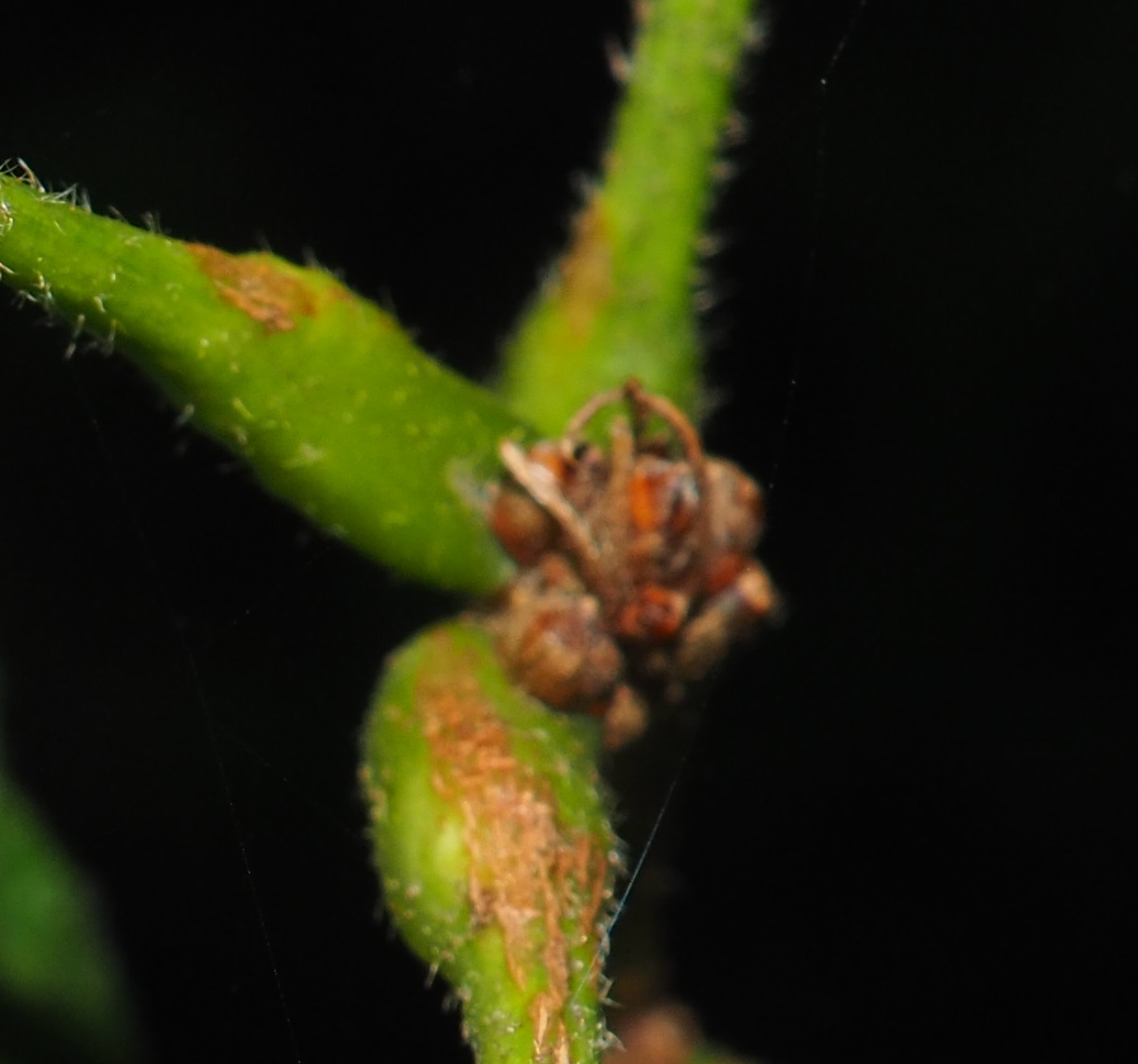
Another scorpionfly; one of the European escargots that came here via an imported plant, I can only think. For years, they have killed anything I would plant that was of the echinacea or rudbeckia gender. Now that I have one Black-eyed Susan, maybe I can hope they are dying out... The last picture shows some growths that I've never heard talked about on goldenrod. Are they related to the pink and yellow ones in last week's blog?
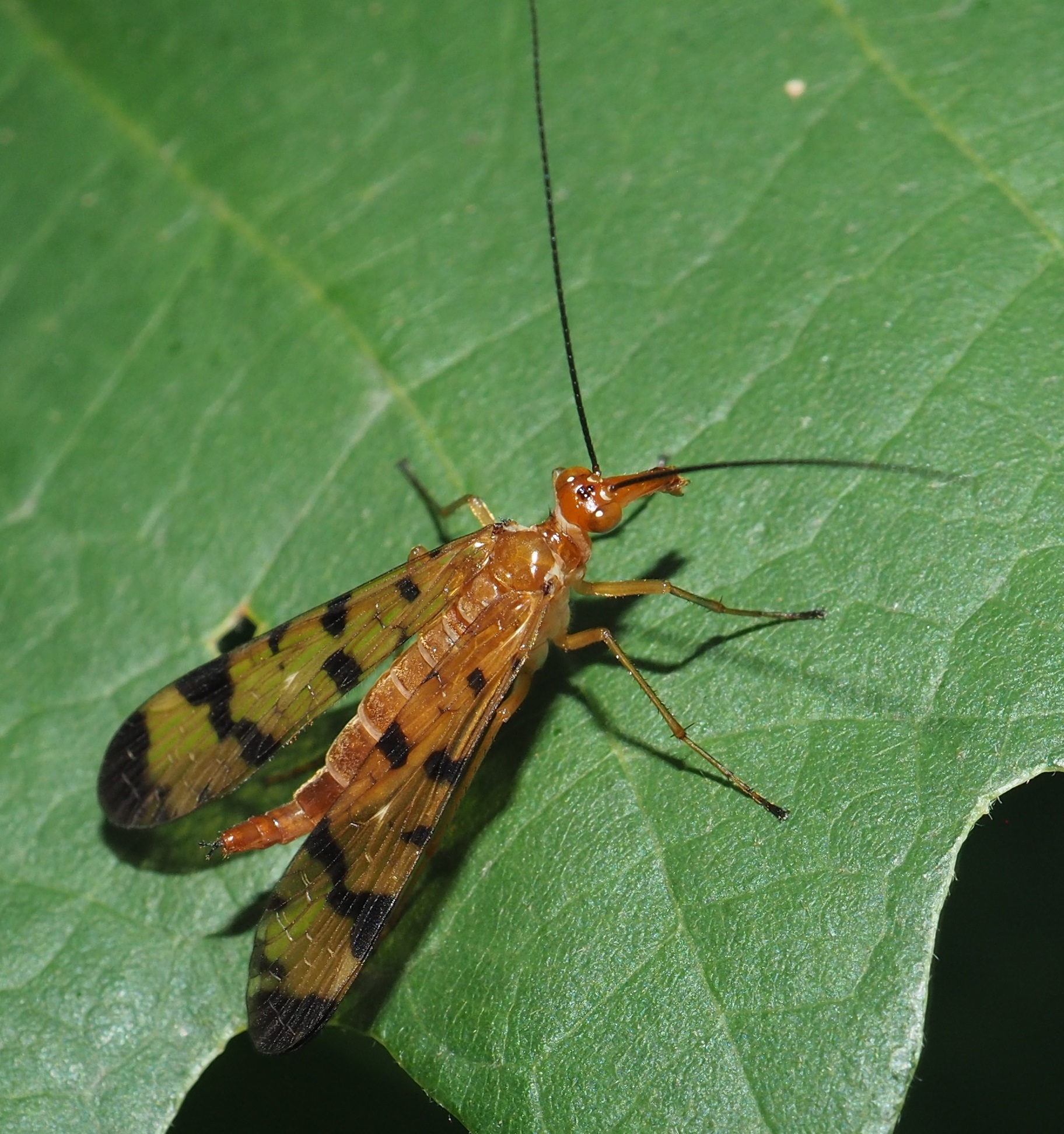
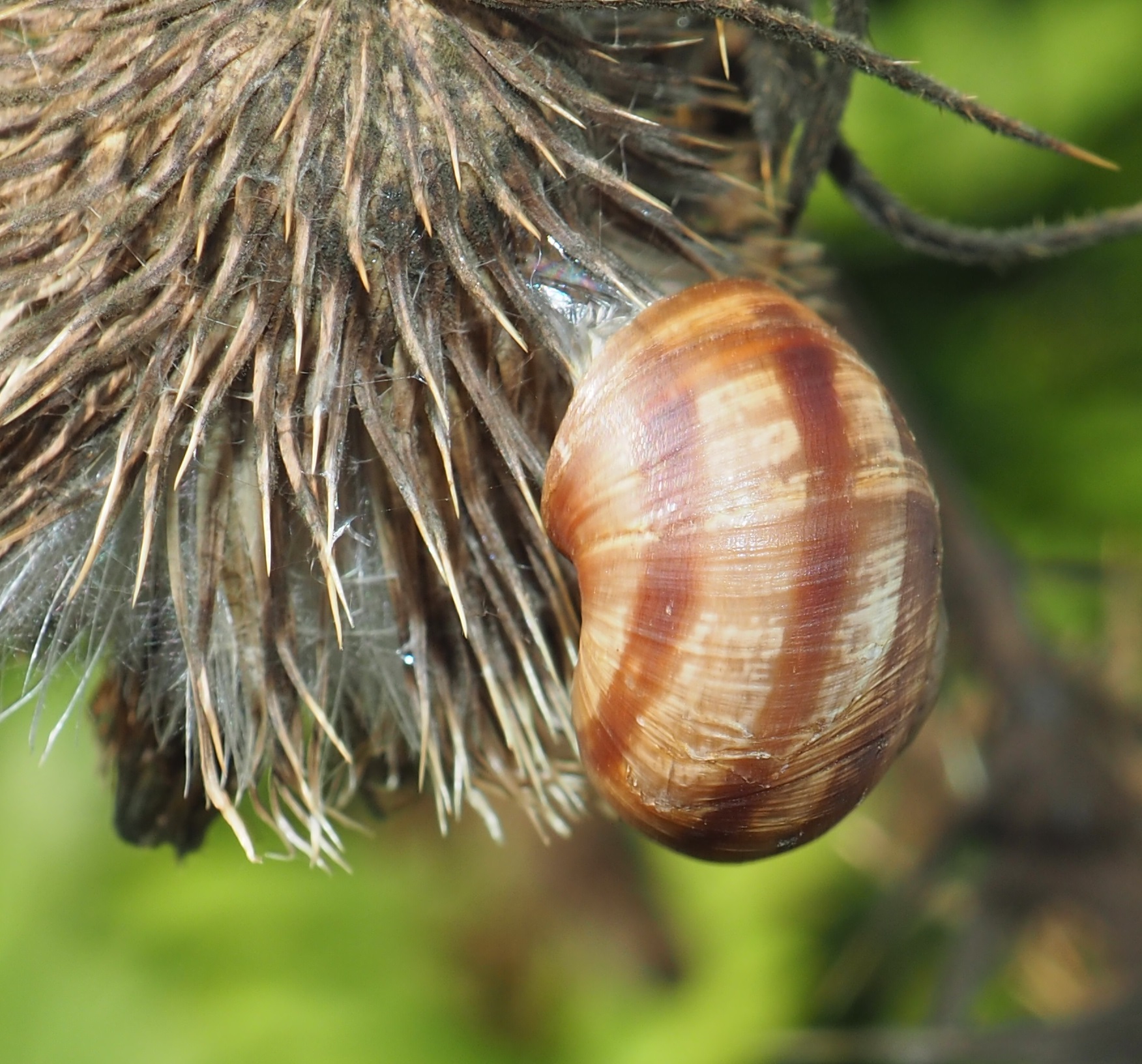
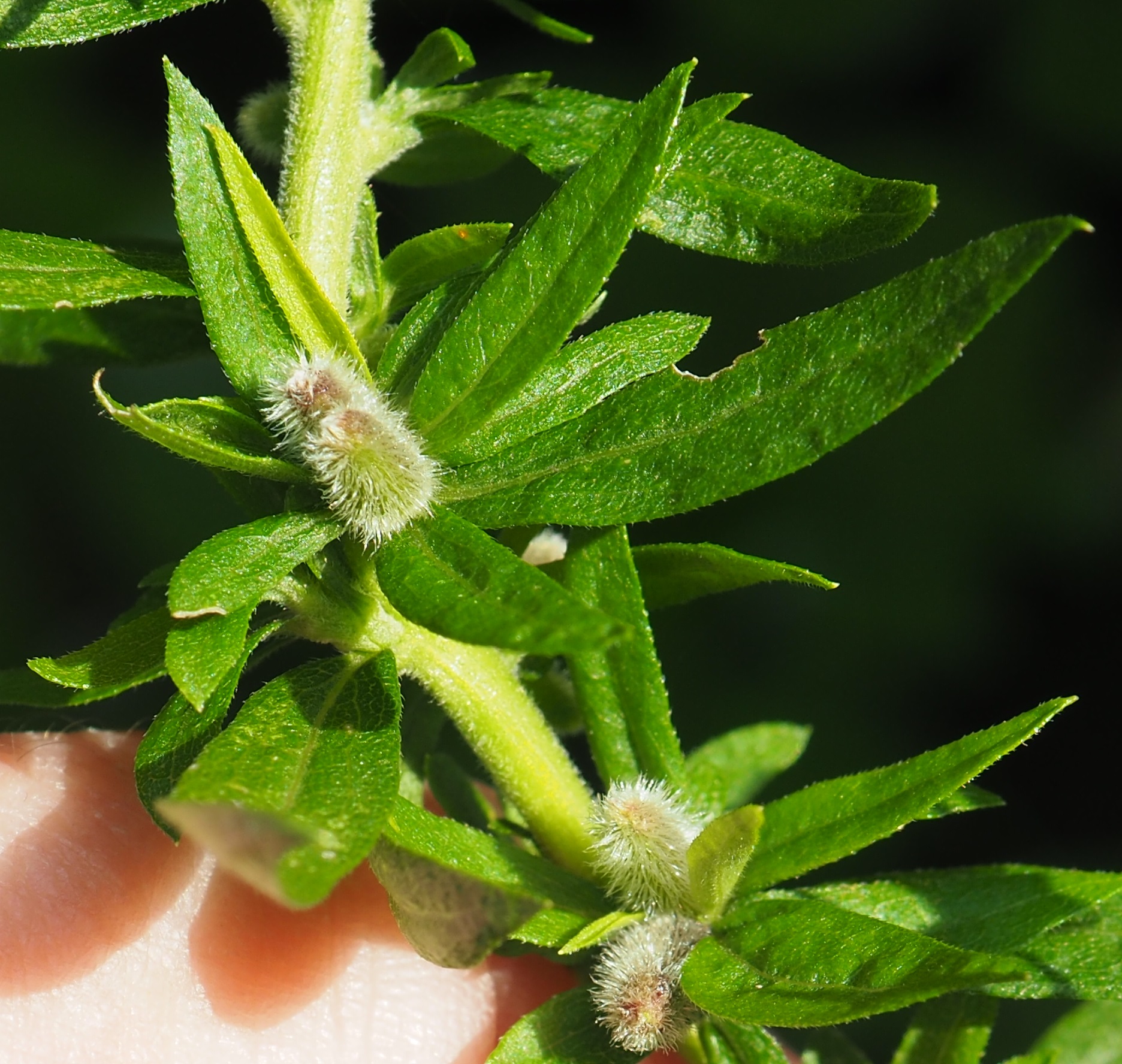
Spiders: First is a cellar spider, inside the screen of a window. Then a Common House Spider (chs) which seems to be ferrying around a batch of baby spiders. Finally that gorgeous red male chs.
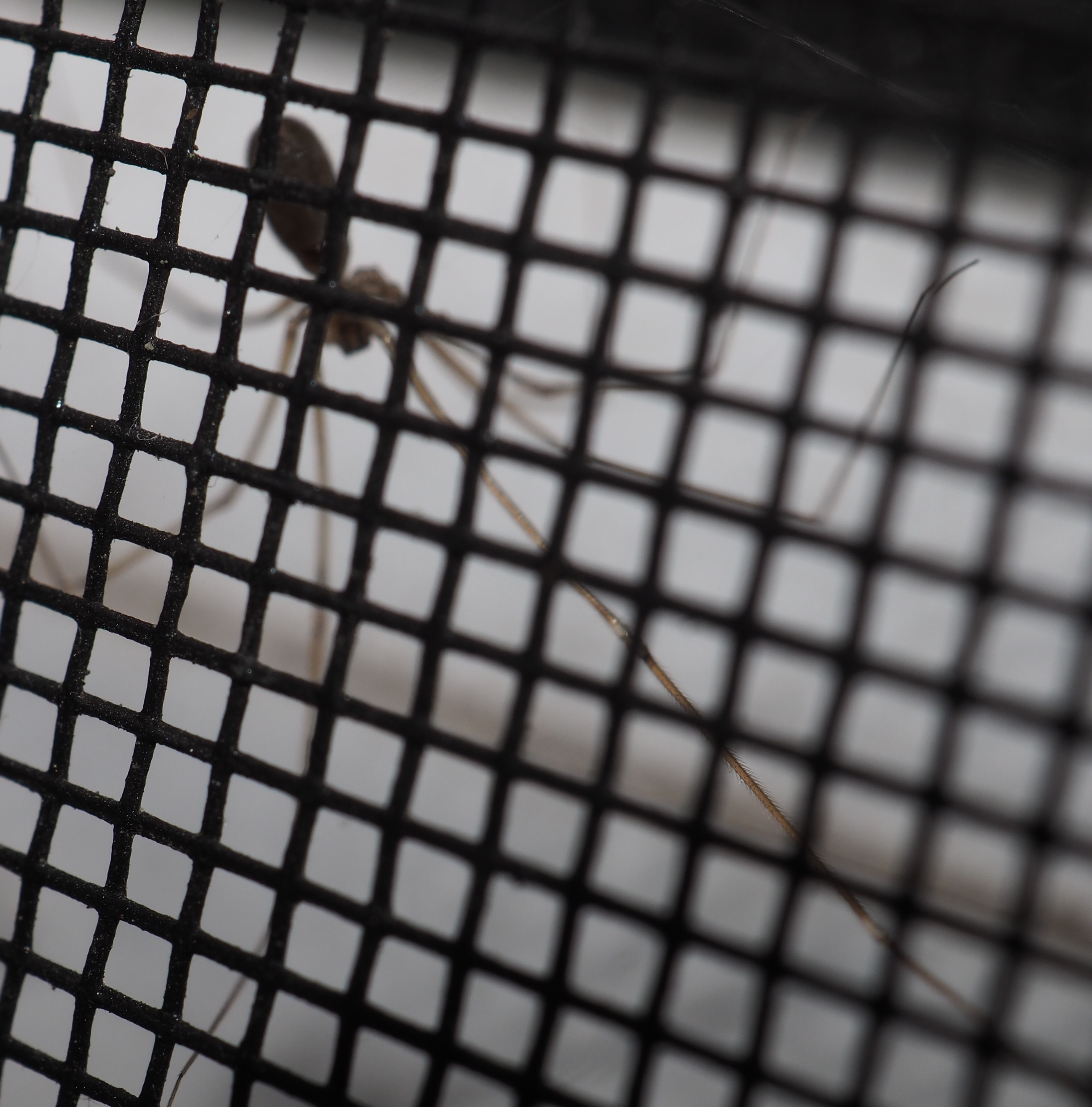
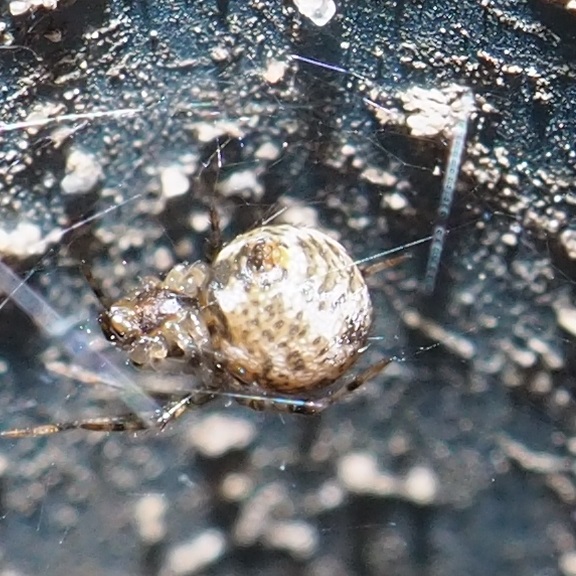
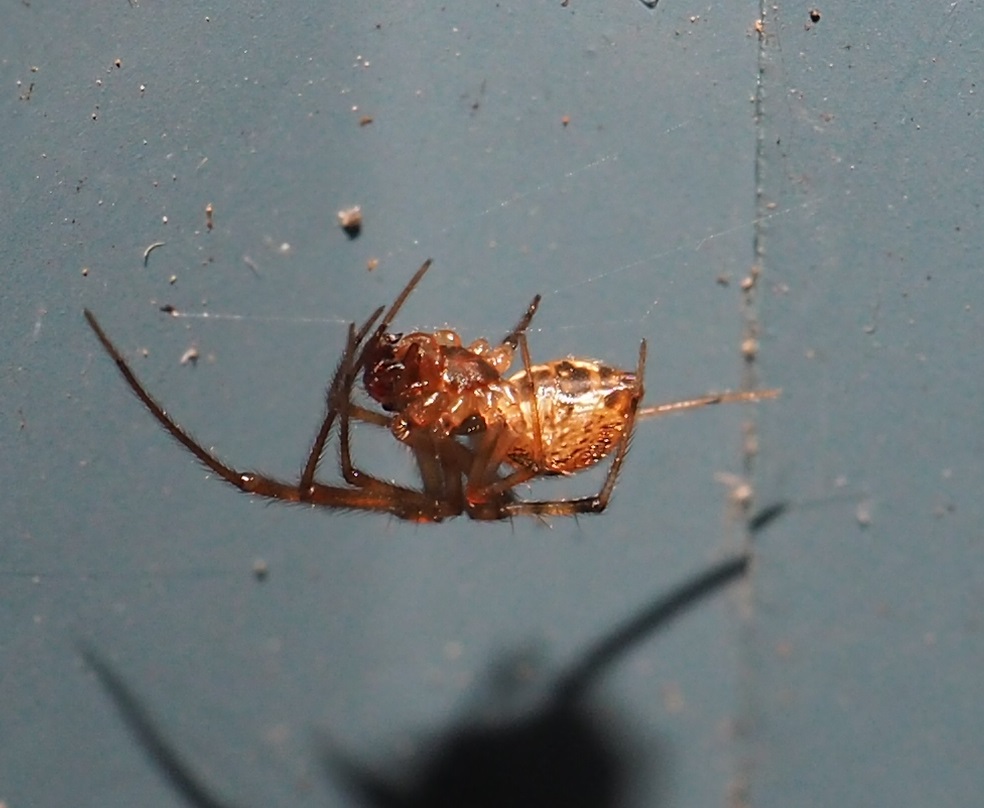
Here is a ghost spider. They always have dark mouthparts. Second is a grass spider, which operates from inside a sheet web. She can run out to nab her prey just like that. Third seems to be a jumping spider that I've never seen before. Fourth is our old fave, a male Naphrys pulex.
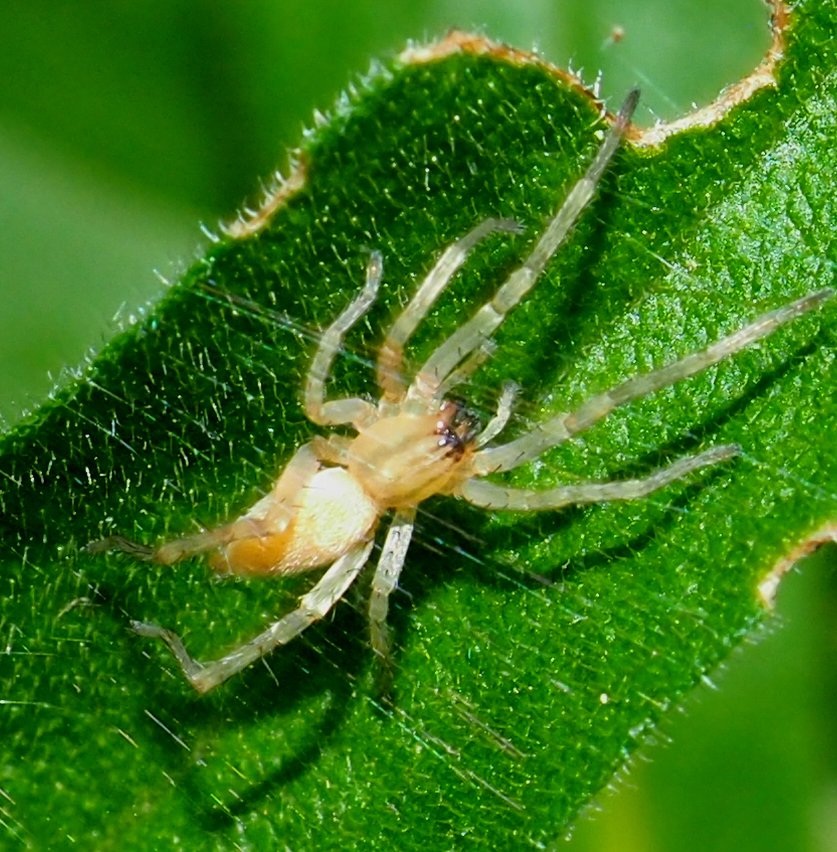
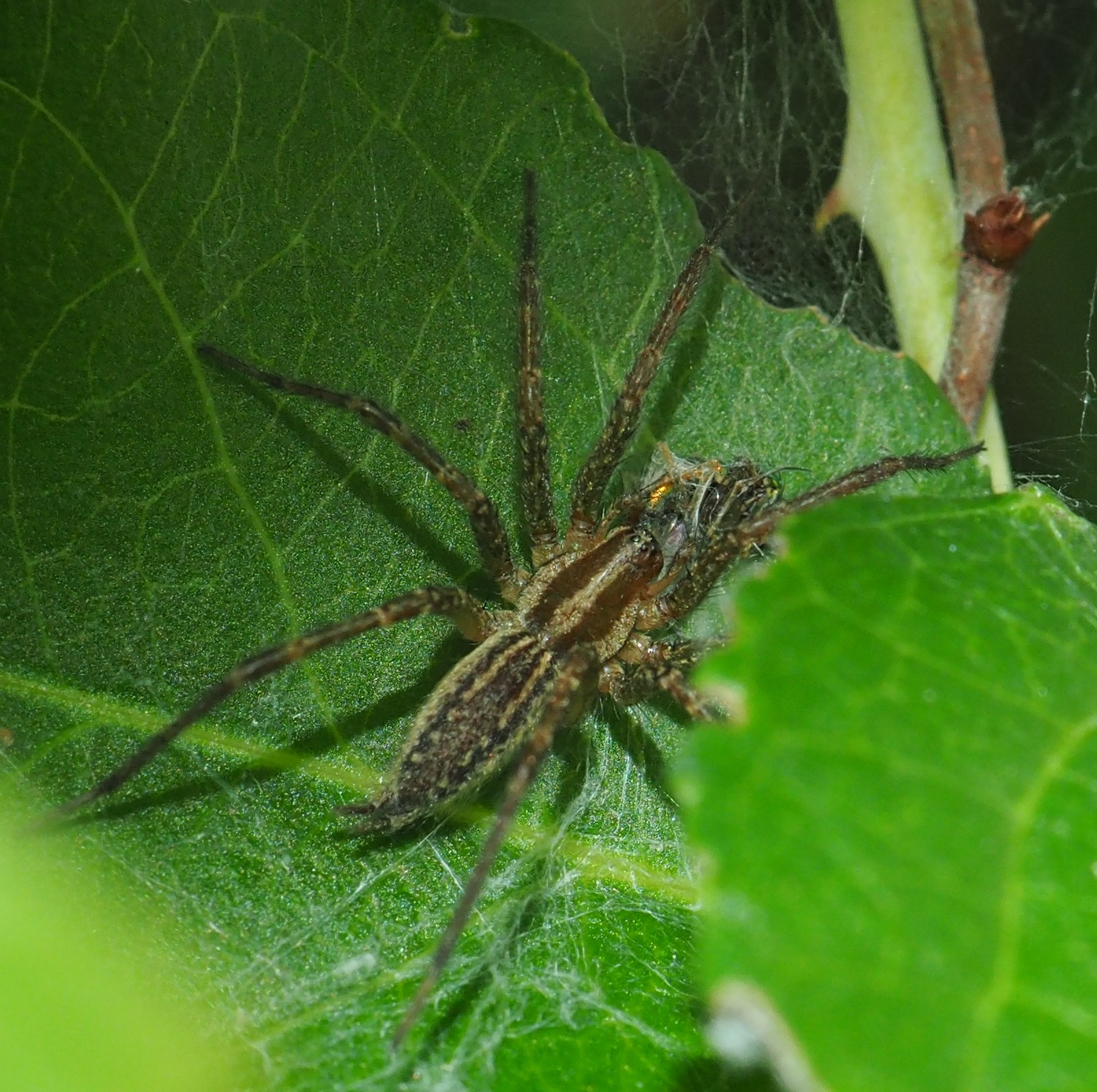
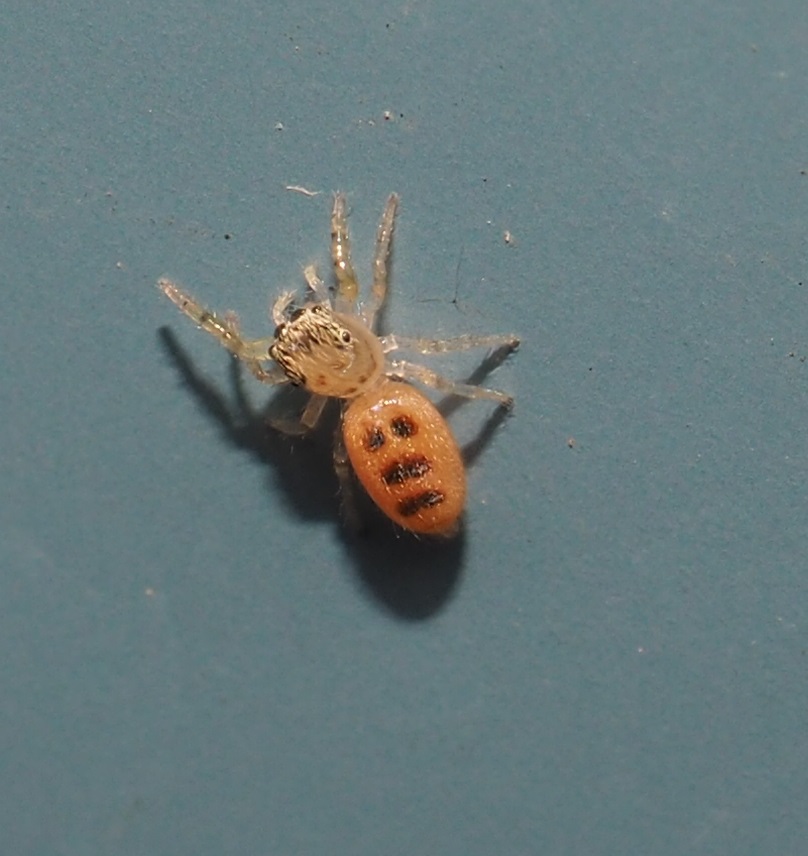
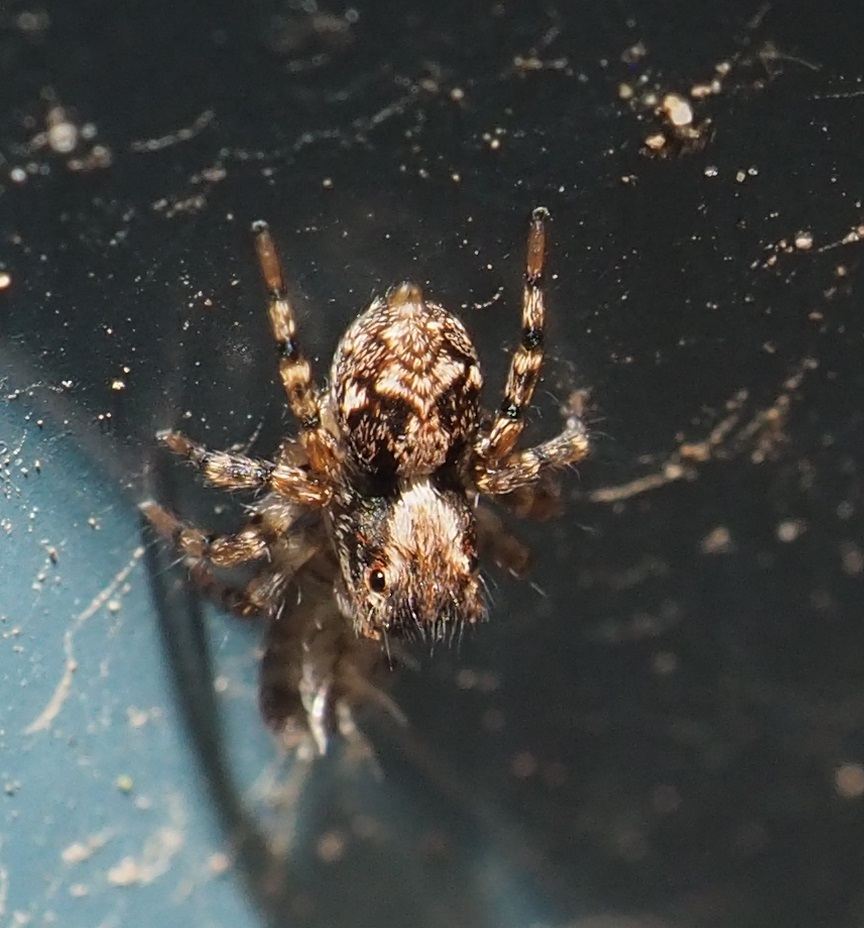
First is an unknown spider, and so is number 2. Could number 3 be a springtail? I always see them at the beginning and end of a season... Brrr. But last is a tiny toadlet. Seems that I almost step on one every day.
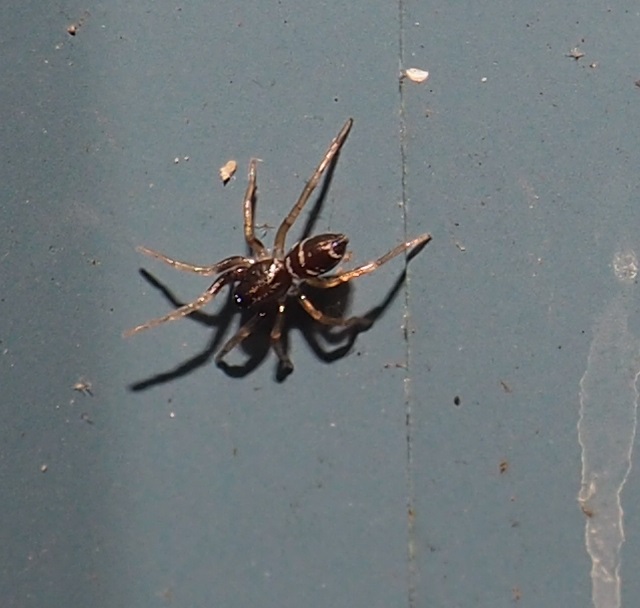

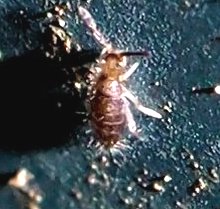
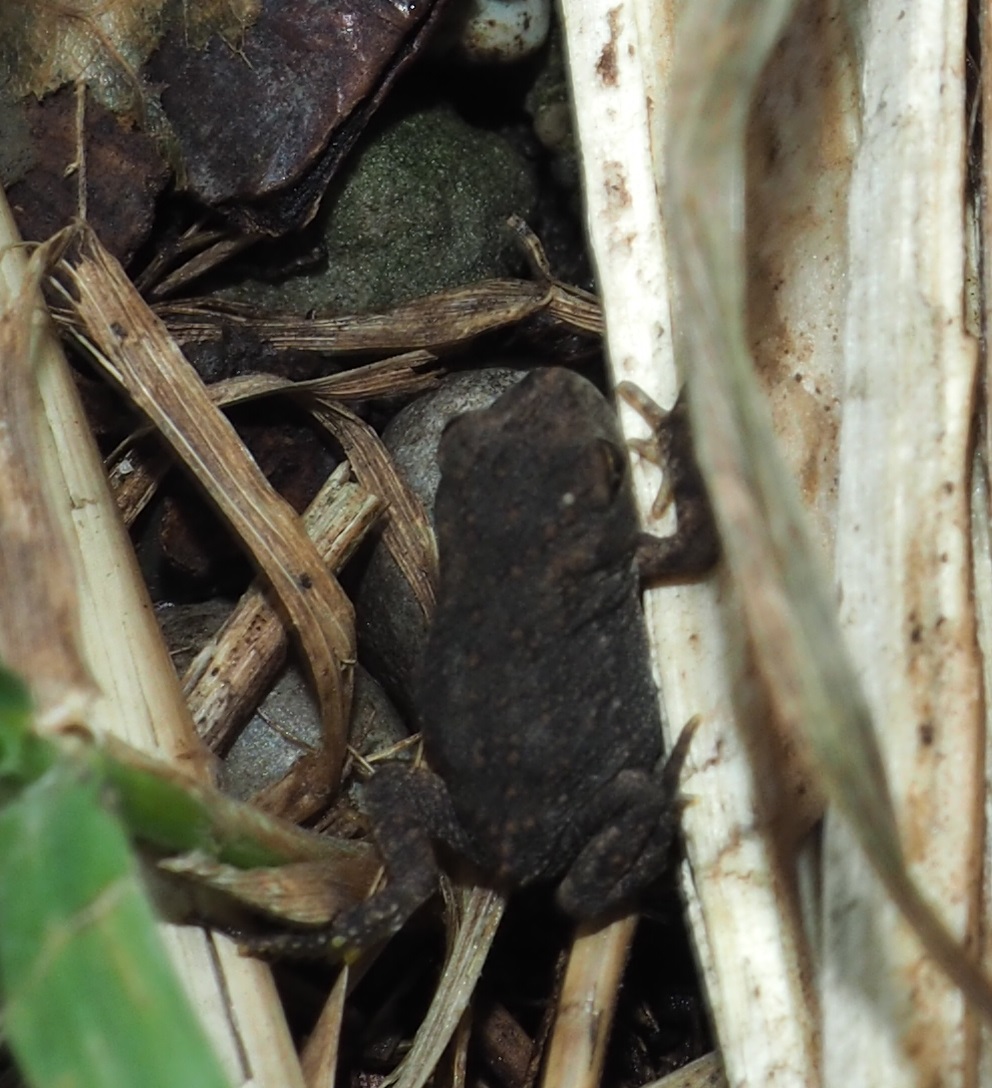
With the blooming goldenrod come the wasps. Here is Cerceris clypeata, I think, since I haven't seen its face. Second is one of the females (workers vs queens) of the Aerial Yellowjacket, Dolichovespula arenaria. Third is Eumenes fraternus. If I could see its face I'd be able to tell you male or female.

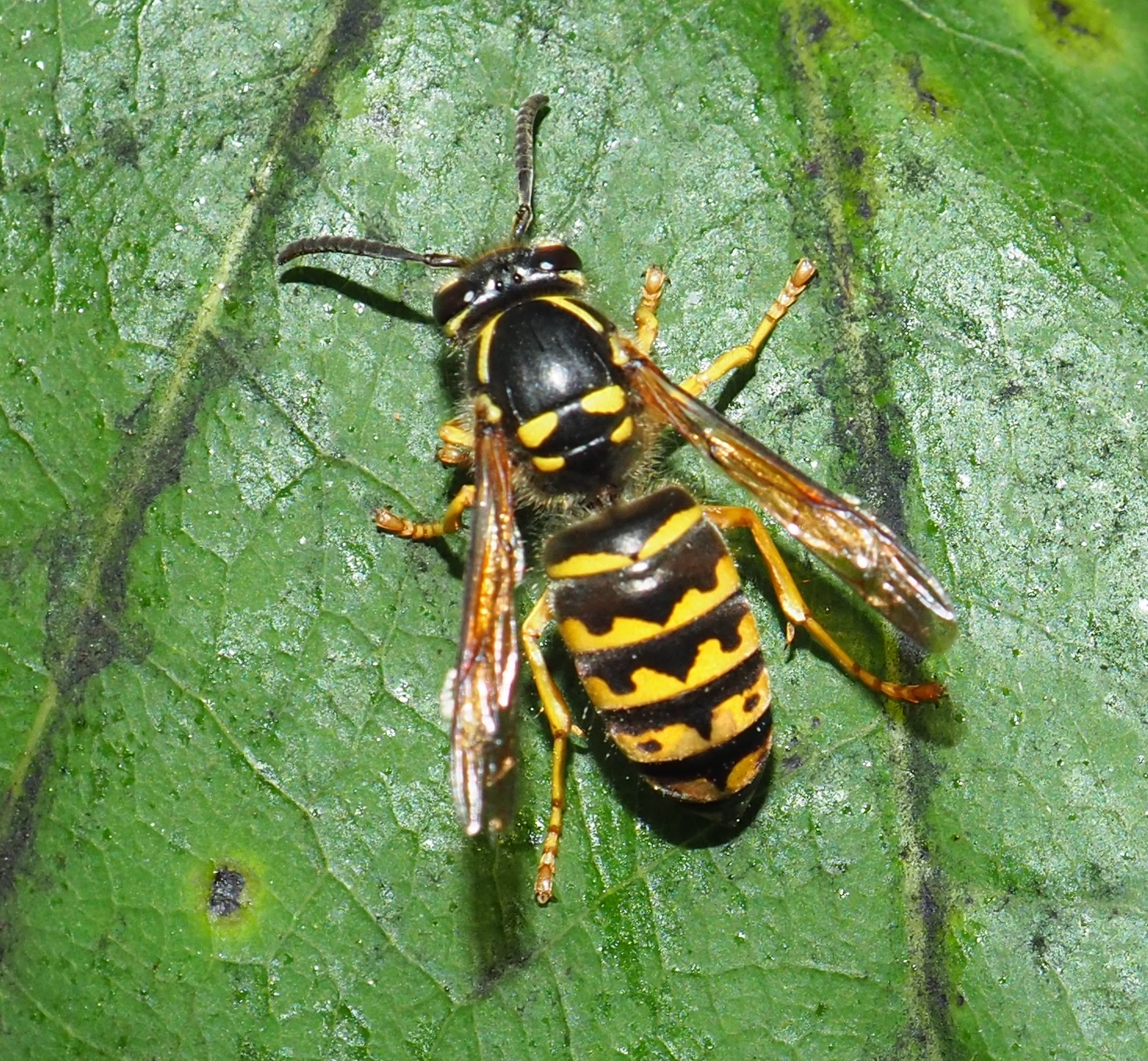
 blooming goldenrod 8 21 18 1.jpg)
First is a new wasp for me. Second is a small blue-winged wasp or ichneumon.
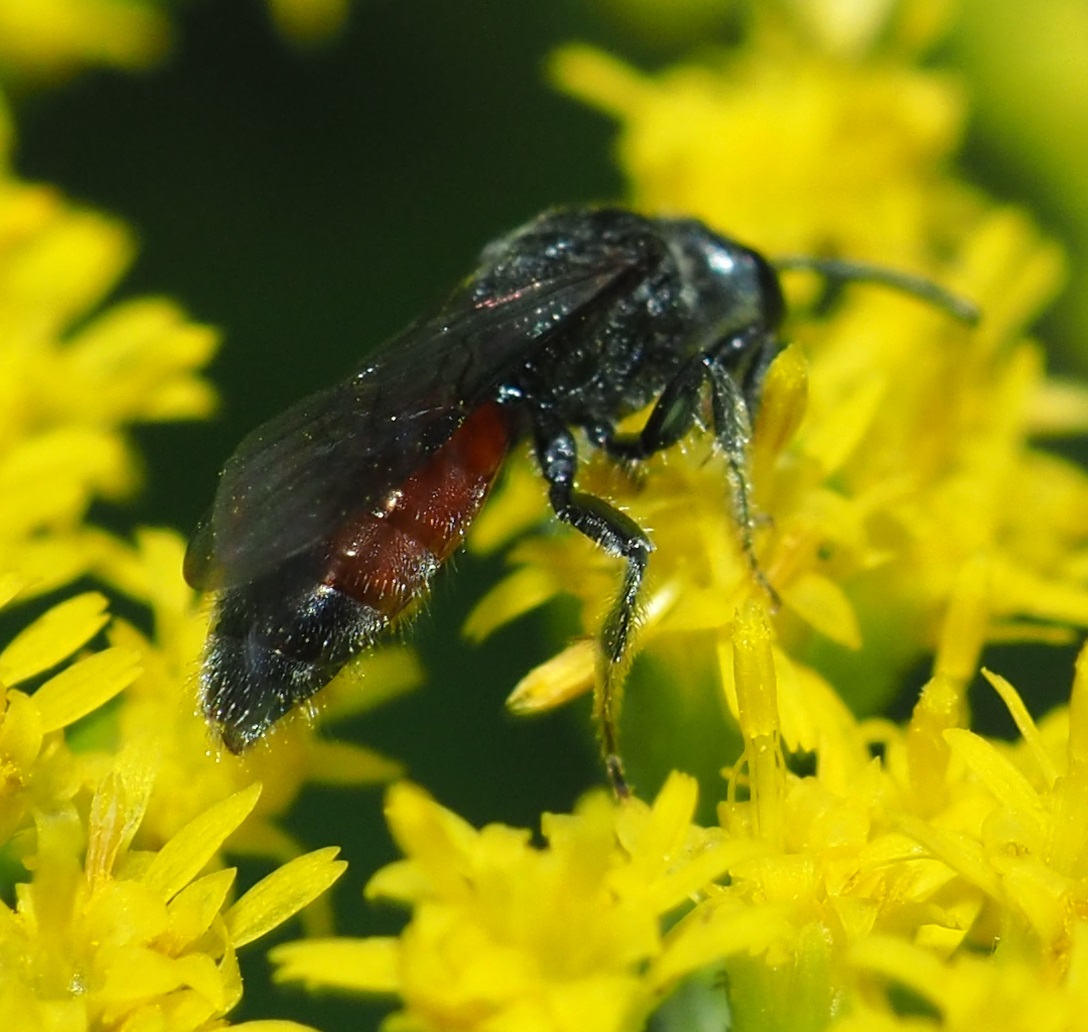
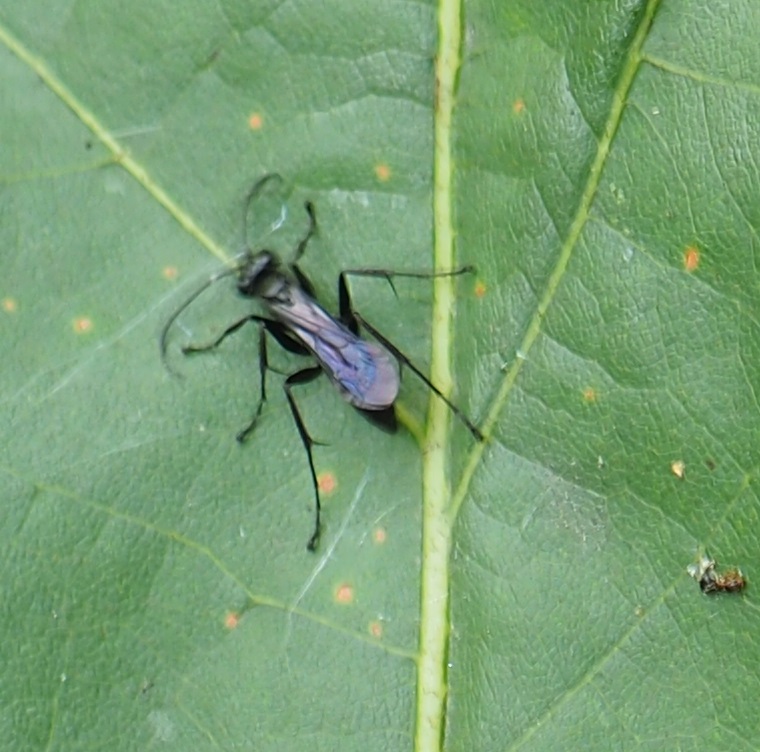
Here is my one pond picture of the week. This time there were four huge pink water lilies. (No frog though! We'll have to keep hunting for her/him)
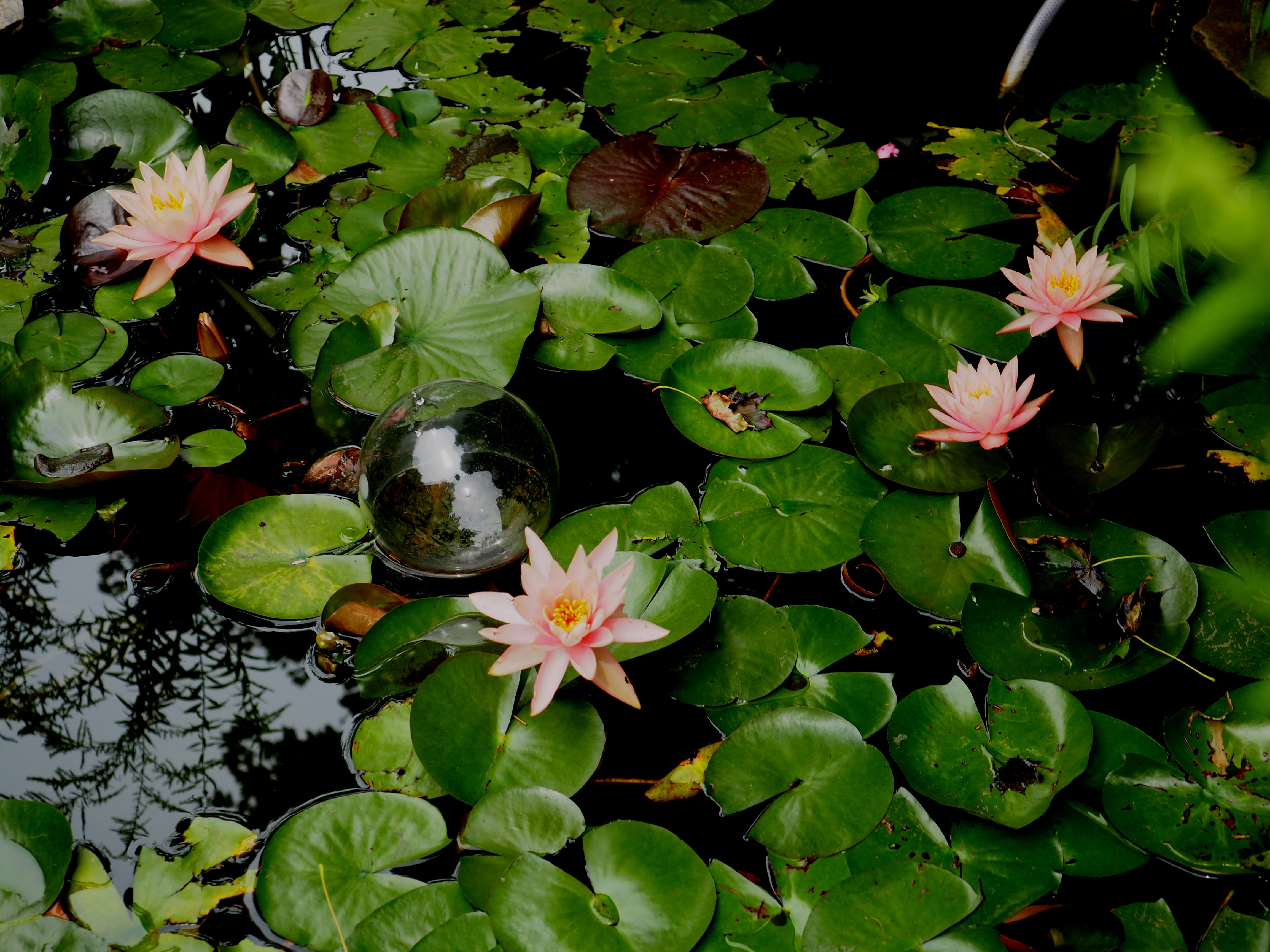
What a week! I hope all of you are well and happy out there. Love to see you anytime! How big is this world anyway?
Love to everyone,
Martha
Back to August 19, 2018
Forward to September 2, 2018
Back to main menu
copyright Martha O'Kennon 2018















 8 19 18 1.jpg)



































































 blooming goldenrod 8 21 18 1.jpg)


